|
Shilin Night Market (aka Shihlin Night Market) is the largest night market in Taipei and also one of the most popular. Full of delicious street food, small hole-in-the-wall restaurants, souvenirs, and clothes, it is a great destination to experience Taiwan's night market culture.
Background: Shihlin Night market lies next to Jiantan MRT station, surrounded by Wenlin Road (文林路), Jihe Road (基河路), and small alleyways Xiaobei Street (小北街), and Xiaoxi Street (小西街), forming a giant triangle making it the biggest night market in Taipei City by area. Shihlin may have the most food stalls and restaurants of any night market in Taiwan, and is often regarded as the best or one of the favorite night markets in Taiwan by both locals and tourists alike. The night market features multiple alleyways as well as an underground food court and underground parking garage. Located next to Mingchuan University, Soochow University, China Culture University, and Shih Chien University, it has a constant supply of hungry university students visiting every day. Shilin Market was first established in 1909 near the Matzu Cicheng Temple, which now lies at the center of the night market. Before that is was a resting stop for cargo on the way to Dadaocheng. In 1998, Shilin Market was named as a historical monument. After that from 1999-2011, the market underwent multiple renovations, and relocated to a temporary structure near Jiantan MRT station, until renovations were completed in 2012. Hours: Around 4 PM until 12 Midnight, every day. Tours: You can book a Shilin Night Market Walking Tour With a Private Tour Guide on TripAdvisor here or Klook here. Hotels in Taipei: High end: We have stayed at and recommend the Yuanshan Grand Hotel, once the tallest building in Taiwan and still the most grand (book on Booking.com here, Tripadvisor here, or Agoda here). We have also stayed at and recommend the Grand Hyatt (book on Booking.com here, Tripadvisor here, Agoda here, or Hotels.com here), Marriot (book on Booking.com here, Tripadvisor here, Agoda here, or Hotels.com here), Sheraton (book on Booking.com here, Tripadvisor here, Agoda here, or Hotels.com here), Shangri-la (book on Booking.com here, Tripadvisor here, Agoda here, or Hotels.com here), and Regent (book on Booking.com here, Tripadvisor here, Agoda here, or Hotels.com here), which are all very high quality hotels in the middle of Taipei City. We also recommend Fullon Hotel which has locations in Tamsui and Fulong near the beach (book on Booking.com here, Tripadvisor here, Agoda here, or Hotels.com here). Budget Hotels: We have stayed at and also recommend Fu Chang Hotel in Ximending, which is within walking distance of Ximending shopping district (book on Booking.com here, Tripadvisor here, or Agoda here). We have also stayed at and recommend Hai Xia Your Home which is right in front of Fulong Beach (book on Booking.com here, Tripadvisor here, Agoda here, or Hotels.com here). Looking for a hotel? We recommend booking through Booking.com here, which provides the best quality selection of accommodation in Taiwan. Find out where to stay in our Taiwan hotels guide or search for the best hotel deals in Taiwan here. Just to let you know, if you book using the links above, we get some commission at no cost to you, and you can help support our blog. Some of the Klook links may not work if you are using an Ad blocker. You can click here to receive $5 USD on your first Klook purchase. How to get there: By MRT: Take the Red Line to Jiantan Station and then take exit 1 north out of the station. The night market is right across the road. You can also book an MRT travel pass on Klook here. By Scooter: Take Zhongshan North Road out of Taipei and wind around Yuanshan Hotel into Shilin. You can park on the right side of the road next to Jiantan Station. Looking for scooter rental in Taipei? You can search on Klook here or KKday here to search for options. You can also check out our scooter rental guide here. By Car: Take Zhongshan North Road out of Taipei and wind around Yuanshan Hotel into Shilin. There are many parking garages around the night market. If you are looking for car rentals, you can also search Qeeq here, Klook here, or KKday here. You can also check out our car rental guide here. By Bicycle: Cycling is the best way to enjoy Taiwan's landscapes if you have the time and energy. Looking for bicycle rentals in Taiwan? You can use Taiwan's many Youbike sharing stations, or search for rentals on KKday here, and search for tours on Klook here. You can also check out our Taiwan cycling guide here. You can also book a Sunset Riverside Bike Ride and Historical Tour, 4 Hour Cycling in Taipei, Ultimate 8-Hour Cycling City Tour, or Taipei City Bike Tour with Night Market Experience on TripAdvisor here. For more information, check out our Taiwan transportation guide here. Map: Please see below:
2 Comments
Feng Chia Night Market (aka Fengjia Night Market) in Taichung City is said to be the largest and also has the best food of any night market in Taiwan. Here you can find every Taiwanese snack food you could ever want and more. Popular foods here include stinky tofu, danbing (egg pancake), fried chicken, taro ice, octopus balls, and much more for you to explore. It should definitely be on your list for your next trip to Taiwan.
Background: The area where Feng Chia Night Market stands was a former dependents village for KMT military veterans. However, in 1963 the area was chosen for the new Feng Chia Industrial Academy, which later became Feng Chia University. Due to the increase of nearly 20,000 students, the area outside the school became a hotbed for cheap snacks to feed hungry students. The same thing has happened in other areas of Taiwan, such as Shilin Night Market, which is close to Mingchuan University, Soochow University, China Culture University, and Shih Chien University. Currently, Fengchia Night Market has nearly 400 stall spaces and has over 10 million visitors annually. The night market is busy every night, bus especially on holidays and weekends. Hours: Around 4 PM until 2 AM, every day. Tours: There are many tours of Taichung available on KKday here or Klook here, such as an Instagram Day Tour, Historic Downtown and Sun Cake DIY Experience, Taichung Railway Station Walking Tour, Local Market Biking Tour, Aboriginal Food Tour, and much more on KKday here or Klook here. Hotels in Taichung: Most of the accommodation you will find is near the city center. If you will only visit downtown, you can consider a day trip from Taipei. We have stayed at and recommend the Norway Forest Travel Hotel, a convenient hotel right in front of Taichung Station (you can book on Booking.com here, Agoda here, or compare prices on Kayak here), and Sin Fu Business Hotel which is also a great value for the money and great quality in downtown Taichung (you can book on Agoda here or compare prices on Kayak here). Looking for a hotel? We recommend booking through Booking.com here, which provides the best quality selection of accommodation in Taiwan. Find out where to stay in our Taiwan hotels guide or search for the best hotel deals in Taiwan here. How to get there: By Bus: From Taichung station, you can take bus 79 to the night market. You can also book a Taichung sightseeing bus on KKday here. By Car/ Scooter: From Central Taichung. take Taichung Avenue East and then turn right on Xitun Road, and later another right onto Wenhua Road and you will see the night market. There is limited scooter parking on the side of the road and some paid car parking nearby. Looking for scooter rental in Taichung? Check out Klook here or KKday here to search for options. If you are looking for car rentals, you can also search Qeeq here, Klook here, or KKday here. You can also check out our car rental guide here. By Bicycle: Cycling is the best way to enjoy Taiwan's landscapes if you have the time and energy. Looking for bicycle rentals in Taiwan? You can use Taiwan's many Youbike sharing stations, or search for rentals on KKday here, and search for tours on Klook here. You can also check out our Taiwan cycling guide here. You can also book a Market Biking Tour in Taichung on Klook here. For more information, check out our Taiwan transportation guide here. Map: Please see below:
Taiwan's northern coast is an amazing, beautiful area with unique geology and rocks, lots of sandy beaches, amazing mountain views and hikes, old streets, night markets, historical sites, and much more to discover. Don't not come here.
Brief Historical Background: The sandstone that forms Northern Taiwan was created between 10 and 20 million years ago and was pushed out of the sea along with northern Taiwan thousands of years ago. Sediment under the ocean millions of years ago was uplifted thanks to the collision of the Eurasian and Philipine plates. The rocks have then been slowly eroded away by wind and water, creating odd shapes that you see today. You can see similar formations at Yehliu Geopark. What is now Keelung and Taipei was once part of Basay aborigine lands. The area around Yilan was inhabited by the Ketagalan Aboriginal tribe, whose language is now extinct. The name Yilan comes from this language. Chinese settlers from Fujian began living in the Taipei Basin during the Dutch rule in the 1600s. Keelung was first settled by the Spanish in 1626, as their first settlement in what became their rule of northern Taiwan until they were defeated by the Dutch and left Taiwan in 1642. The Qing Dynasty then ruled western Taiwan starting from the late 1600s. The capital of Taiwan was moved to Tainan. In 1891, the first train connecting Keelung and Taipei was completed. During this time, the Qing Dynasty built many forts near Keelung in response to the Opium Wars and the Sino-French War. During the Japanese Era, the capital of Taiwan was moved to Taipei and a round-island railway was completed. Currently a High-Speed Rail extension is planned for Yilan, and is expected to be completed by 2036. The northern coast of Taiwan is a popular weekend destination for the nearly 8 million people who live in the greater Taipei area. Basic Taiwan Travel Tips:
When should you go to Taiwan's Northern Coast? In my opinion, the best weather in Taipei is from March-May, and October - November, when the temperatures stay around 26 degrees Celsius and there is not as much rain. Summers are also nice, with the most sunny weather, but also hot and rainy. Winters can be cold (but not below freezing) and usually wet. Overall, there is no wrong answer as to what time of year you should visit Taipei. You will have a great time here at any time of year. Hotels on Taiwan's Northern Coast: We recommend Fullon Hotel which has locations in Tamsui and Fulong near the beach (book on Booking.com here, Tripadvisor here, Agoda here, or Hotels.com here). We have stayed at and recommend Gold Mountain Ranch, which is a horse ranch and glamping destination in Jinshan. You can book a night at Gold Mountain Ranch on Klook here. You can also check out our full blog on the ranch here. We have also stayed at and recommend Hai Xia Your Home which is right in front of Fulong Beach (book on Booking.com here, Tripadvisor here, Agoda here, or Hotels.com here). Looking for a hotel? We recommend booking through Booking.com here, which provides the best quality selection of accommodation in Taiwan. Find out where to stay in our Taiwan hotels guide or search for the best hotel deals in Taiwan here. Tours of Taiwan's Northern Coast: There are many tour itineraries that you can enjoy along Taiwan's Northern Coast that will take you to multiple destinations and arrange transportation. For more information, you can check out Tripadvisor here, KKday here, or Klook here, which are both great tour websites that can connect you with the right tour and tour guide for you. Here are some of the most popular tours of Taipei on Tripadvisor:
You can book a customized tour of Taiwan's North Coast on TripAdvisor here, Klook here, or KKday here. Attractions along Taiwan's Northern Coast: There are many attractions that you can enjoy along Taiwan's Northern Coast such as Yehliu Ocean World, Yehliu Geopark, National Museum of Marine Science and Biology, Heping Island Park, Ju Ming Museum, New Taipei Gold Museum, Futian Leisure Farm, Fort San Domingo, 13 Levels Archaeology Museum, Bat Cave, Candlestick Islet, Activities along Taiwan's Northern Coast: Don't forget that there are many activities available along Taiwan's Northern Coast such as Wakeboarding, Surfing, Speedboat Surfing, SUP / Paddle Boarding, Diving, Snorkeling Kayaking, Canoeing, Water Biking, River Tracing / Canyoneering, ATVing, Horse Riding, Archery, Tree Climbing, Glamping, Motorcycling, Motorbike Tour, Dragon Boat Racing, Shen'ao Rail Bike, and more on Tripadvisor here, Klook here, or KKday here. Just to let you know, if you book using the links above, we get some commission at no cost to you, and you can help support our blog. Some of the Klook links may not work if you are using an Ad blocker. You can click here to receive $5 USD on your first Klook purchase. How to get there: The only way to get to Taiwan is via airplane. Planes leave daily from Taipei's Songshan and Toayuan Airport. Taoyuan Airport: Taoyuan is Taiwan's largest airport and typically has cheaper flights and more flight times to choose from. It's about an hour's journey from Taoyuan Airport to the center of Taipei. You can travel via MRT, HSR, bus, or taxi to get to Taipei. You can get 30% off the Taoyuan Airport VIP lounge on KKday here. Songshan Airport: Songshan is a small airport in Taipei's city center, and can be a convenient option for people traveling within Asia. The airport is right on the Taipei MRT brown line. You can book cheap flights to Taiwan on KKday here, Trip.com here, CheapO Air here, or Kiwi here. How to get around Taiwan's Northern Coast: Northern Taiwan's transportation system is convenient and safe. There are many options you can consider to get around along Taiwan's Northern Coast below: By Train: Gets you to Keelung, Fulong, and Yilan along the north and east parts of the North Coast. Book tickets via the normal train (TRA) on Klook here. By MRT: (Mass Rapid Transit, Metro train, subway) – Easily gets you around Taipei and Tamsui. You can purchase a discount easy card to use on the MRT from Klook here or KKday here. You can also book an MRT travel pass on Klook here. By Bus: Buses run along the entire northeast coast, but they may be slow and there may not be many busses during weekdays. You can also book tickets to travel to Shifen via inter-city bus on Klook here. You can also book a Taipei Sightseeing: Hop On, Hop Off Open Top Bus on TripAdvisor here. By Taxi: You can take short rides for about 150 NT, or hire a Taxi for a day for around 150 USD. You can search for private chartered cars on KKDay here. By Car: If you are looking for car rentals, you can also search Qeeq here, Klook here, or KKday here. You can also check out our car rental guide here. By Scooter: Looking for scooter rental in northern Taiwan? You can search on Klook here or KKday here to search for options. You can also check out our scooter rental guide here. By Bicycle: Cycling is the best way to enjoy Taiwan's landscapes if you have the time and energy. Looking for bicycle rentals in Taiwan? You can use Taiwan's many Youbike sharing stations, or search for rentals on KKday here, and search for tours on Klook here. You can also check out our Taiwan cycling guide here. You can also book a cycling tour on TripAdvisor here. For more information, check out our Taiwan transportation guide here. Here is a map of the locations we will cover in this blog:
Ningxia Night Market is one of the most popular night markets in Taipei. The night market takes up two city blocks and includes food stalls as well as sit-down areas and restaurants. Popular delicacies here include Oyster Omelet, fried chicken, fried squid, and much more. The night market is also very close to the Dadaocheng historical area and is often considered to be a part of it. It is definitely worth a stop on your next trip to Taipei.
Historical Background: Ningxia Night Market began as a few food stalls on on the Jiancheng Roundabout (建成圓環) on Chongqing North Road, not long after the Danshui Railway Line was built in 1908. It was the most popular night market in Taipei during the Japanese Era. After the ROC took control of Taiwan, it continued to be a popular night market known for great food and cheap prices. After Chongqing North Road was widened in 1973, most of the stalls moved north to either side of Ningxia Road. Ningxia Road was refurbished in 2006 making it more sanitary and environmentally friendly. In 2015, it was named the best night market for shopping, the friendliest night market, the most charismatic night market, the most environmentally conscious night market, and the best-tasting night market in Taipei. As for the roundabout, the local government saw it as a run-down area with lots of illegal stalls. There were also two large fires there in 1993 and 1998. In 2002, then Taipei Mayor Ma Yingjeou tore down the old roundabout and built a glass restaurant area in its place. However, restaurant owners found that the new building was poorly designed and bad for business, and the popular restaurants moved out. Later on, in 2008 the area was rebuilt again, but there was a scandal involving how the area was rented, and so the area shut down in 2011. In 2016, the roundabout was made into a park. Hours: Open from 5 PM until 1 AM, every night. Tours: You can book a food tour of Ningxia Night Market on Klook here or TripAdvisor here. Hotels in Taipei: We have stayed at and recommend the Yuanshan Grand Hotel, once the tallest building in Taiwan and still the most grand (book on Booking.com here or Agoda here). We also recommend Fullon Hotel which has locations in Tamsui and Fulong near the beach (book on Booking.com here or Agoda here). Budget Hotels: We have stayed at and also recommend Fu Chang Hotel in Ximending, which is within walking distance of Ximending shopping district (book on Booking.com here or Agoda here). We have also stayed at and recommend Hai Xia Your Home which is right in front of Fulong Beach (book on Booking.com here or Agoda here). Looking for a hotel? We recommend booking through Booking.com here, which provides the best quality selection of accommodation in Taiwan. Find out where to stay in our Taiwan hotels guide or search for the best hotel deals in Taiwan here. How to get there: By MRT: Take the Red Line to Shuanglian Station and then take exit 1 or 2 west out of the station. The night market is about two blocks down the road. You can also book an MRT travel pass on Klook here. By Scooter: Take Chongqing North Road in central Taipei until you reach Ningxia Road. You can park on the side of the road near Ningxia Road. Looking for scooter rental in Taipei? You can search on Klook here or KKday here to search for options. You can also check out our scooter rental guide here. By Car: Take Chongqing North Road in central Taipei until you reach Ningxia Road. You can park on the side of the road near Ningxia Road. There are some paid parking garages around the night market. If you are looking for car rentals, you can also search Qeeq here, Klook here, or KKday here. You can also check out our car rental guide here. By Bicycle: Cycling is the best way to enjoy Taiwan's landscapes if you have the time and energy. Looking for bicycle rentals in Taiwan? You can use Taiwan's many Youbike sharing stations, or search for rentals on KKday here, and search for tours on Klook here. You can also check out our Taiwan cycling guide here. You can also book a Sunset Riverside Bike Ride and Historical Tour, 4 Hour Cycling in Taipei, Ultimate 8-Hour Cycling City Tour, or Taipei City Bike Tour with Night Market Experience on TripAdvisor here. For more information, check out our Taiwan transportation guide here. Map: See below:
Tonghua Street Night Market (aka Linjiang Street Night Market) is a large night market in Da'an District of Taipei City. It's not as touristy as other night markets in Taipei, and you can find almost anything to eat here, along with cheap clothes and accessories. If you want to experience an authentic night market experience while in Taipei, Tonghua is the place to go.
Background: Before1964, the area known as Tonghua Night Market was just rice paddies. In 1965, a military dependents village was built on Tonghua Street. In 1979, Linjiang Street was created as an asphalt road, and has since become what we know today as Tonghua Street Night Market. The name of the night market was officially changed to Linjiang Street Tourist Night Market (臨江街觀光夜市) in 2001. The night market sits between Tonghua Street and Keelung Road. It is roughly 300 meters long and has over200 food stalls. Popular foods that the night market is known for include dry noodles, oyster omlettes, suasages, brazed meat, among others. With competition from Raohe Street, Shihlin Night Market, Ximending, and Ningxia Night Market, not as many foreign tourists end up visiting Tonghua Street. Hours: Roughly 6:00 PM to Midnight. Tours: You can buy Tonghua Night Market food pass on Klook here. You can also book a Private Street Food Tour of Taipei on TripAdvisor here. For more information, you can check out Tripadvisor here, KKday here or Klook here, which are both great tour websites that can connect you with the right tour and tour guide for you. Hotels in Taipei: We have stayed at and recommend the Yuanshan Grand Hotel, once the tallest building in Taiwan and still the most grand (book on Booking.com here, Tripadvisor here, or Agoda here). We have stayed at and also recommend Fu Chang Hotel in Ximending, which is within walking distance of Ximending shopping district (book on Booking.com here, Tripadvisor here, or Agoda here). Looking for a hotel? We recommend booking through Booking.com here, which provides the best quality selection of accommodation in Taiwan. Find out where to stay in our Taiwan hotels guide or search for the best hotel deals in Taiwan here. How to get there: By MRT: Take the red line to Xinyi Anhe Station, then get off at exit 3, then take a left down Toinghua Street for four blocks until you reach Linjiang Street, the entrance to the night market. You can also book an MRT travel pass on Klook here. By car/scooter: Go East on Xinyi Road and then turn right on Tonghua Street until you come to Linjiang Street. There is some scooter parking on Tonghua Street and in the alleys, but for a car you need to park in a nearby parking lot or garage. Looking for scooter rental in Taipei? You can search on Klook here or KKday here to search for options. You can also check out our scooter rental guide here. If you are looking for car rentals, you can also search Qeeq here, Klook here, or KKday here. You can also check out our car rental guide here. By Bicycle: Cycling is the best way to enjoy Taiwan's landscapes if you have the time and energy. Looking for bicycle rentals in Taiwan? You can use Taiwan's many Youbike sharing stations, or search for rentals on KKday here, and search for tours on Klook here. You can also check out our Taiwan cycling guide here. You can also book a Sunset Riverside Bike Ride and Historical Tour, 4 Hour Cycling in Taipei, Ultimate 8-Hour Cycling City Tour, or Taipei City Bike Tour with Night Market Experience on TripAdvisor here. For more information, check out our Taiwan transportation guide here. Map: Please see below:
Taiwan is the best kept secret in Asia, and is a great destination to travel. But if you come to Taipei on a business trip or layover, what are the best things to see and do in the city with limited time?
Below we have laid out what we feel are the best one day itineraries in Taipei for those coming to Taiwan for the first time. Brief Historical Background of Taipei: The land on which Taipei now stands on what was once part of Basay tribal land. The Basay people had lived on the land for thousands of years before the first Chinese settlers ever came. Chinese settlers from Fujian began living here during the Dutch rule in the 1600s. The first Chinese settlers came to the area in the mid-1800's during the Qing Dynasty. They created a public area for drying rice and grain, called Dadaocheng (大稻埕) which also became the central market in the area. The earliest trading shops were built in 1851, mainly selling rice, sugar, camphor, and tea. Dihua Street (迪化街) was created around this time, making it the oldest street in Taipei. Most of the buildings were one story and made of red brick in Fujian style, and later western style houses were built. The walls and gates of Taipei were completed in 1884. In 1891, the first train connecting Keelung and Taipei was completed. During the Japanese era, in 1904 the walls of Taipei were destroyed after less than 30 years, and Taipei was re-planned into the capital of Taiwan. After the ROC took control of Taiwan, Taipei continued as the capital city, as well as the financial hub of Taiwan. During the Taiwan miracle, many rural families moved from southern Taiwan to factories and offices in Taipei, making Taipei the most populous urban area in Taiwan. Currently, Taipei is the most advanced and affluent city in Taiwan. It also has Taiwan's most advanced public transportation system, making it easy for millions of commuters to live outside the city where rents are cheaper. Now, most of Taiwan's economic activity is based in this city. Basic Taipei Travel Tips:
When should you go to Taipei? In my opinion, the best weather in Taipei is from March-May, and October - November, when the temperatures stay around 26 degrees Celsius and there is not as much rain. Summers are also nice, with the most sunny weather, but also hot and rainy. Winters can be cold (but not below freezing) and usually wet. Overall, there is no wrong answer as to what time of year you should visit Taipei. You will have a great time here at any time of year. Hotels in Taipei: High end: We have stayed at and recommend the Yuanshan Grand Hotel, once the tallest building in Taiwan and still the most grand (book on Booking.com here, Tripadvisor here, or Agoda here). We have also stayed at and recommend the Grand Hyatt (book on Booking.com here, Tripadvisor here, Agoda here, or Hotels.com here), Marriot (book on Booking.com here, Tripadvisor here, Agoda here, or Hotels.com here), Sheraton (book on Booking.com here, Tripadvisor here, Agoda here, or Hotels.com here), Shangri-la (book on Booking.com here, Tripadvisor here, Agoda here, or Hotels.com here), and Regent (book on Booking.com here, Tripadvisor here, Agoda here, or Hotels.com here), which are all very high quality hotels in the middle of Taipei City. We also recommend Fullon Hotel which has locations in Tamsui and Fulong near the beach (book on Booking.com here, Tripadvisor here, Agoda here, or Hotels.com here). Budget Hotels: We have stayed at and also recommend Fu Chang Hotel in Ximending, which is within walking distance of Ximending shopping district (book on Booking.com here, Tripadvisor here, or Agoda here). We have also stayed at and recommend Hai Xia Your Home which is right in front of Fulong Beach (book on Booking.com here, Tripadvisor here, Agoda here, or Hotels.com here). Looking for a hotel? We recommend booking through Booking.com here, which provides the best quality selection of accommodation in Taiwan. Find out where to stay in our Taiwan hotels guide or search for the best hotel deals in Taiwan here. Tours in Taipei: There are many tour itineraries that you can enjoy in Taipei that will take you to multiple destinations and arrange transportation. For more information, you can check out Tripadvisor here, KKday here or Klook here, which are both great tour websites that can connect you with the right tour and tour guide for you. Here are some of the most popular tours of Taipei on TripAdvisor:
Attractions in Taipei: There are many attractions that you can enjoy in Taipei such as Taipei 101 Observatory, Taipei 101 460 Skyline Observatory, Taipei Children's Amusement Park, Maokong Gondola, National Palace Museum, Yehliu Ocean World, Yehliu Geopark, National Museum of Marine Science and Biology, i-ride 5D cinema, Astronomical Museum, Miniatures Museum of Taiwan, Double Decker Sightseeing Bus, Miramar Ferris Wheel Ticket, Taipei Zoo, Heping Island Park, Ju Ming Museum, Yuanshan Hotel Secret Road, National Taiwan Museum, New Taipei Gold Museum, Futian Leisure Farm, Chiang Kai-shek Shilin Residence, Chi Po-lin Museaum, Beitou Museum, Tsao Wonderland, Railway Museum, Fort San Domingo, 13 Levels Archaeology Museum, Austin Land, Museum of World Religions, Formosan Aboriginies Museum, ASE Parent-child Park, teamLab Future Park, Yukids Island, VR Experience, Bat Cave, Neidong Waterfall, Candlestick Islet, Jurassic Snow Park, Zhonghe High5 Amusement Park, Longshan Temple, Xingtian Temple, Ningxia Night Market, Yansan Night Market, Meteor Garden, Yingge Old Street, and many more attractions on Tripadvisor here, Klook here, or KKday here. Activities in Taipei: Don't forget that there are many activities available in Taipei such as Indoor Skiing, Rock Climbing, Hiking, Wakeboarding, Surfing, Speedboat Surfing, SUP / Paddle Boarding, Diving, Snorkeling Kayaking, Canoeing, Water Biking, River Tracing / Canyoneering, ATVing, Horse Riding, Cooking Class, Archery, Ice Skating, Roller Skating, Tree Climbing, Urban Camping, Glamping, Motorcycling, Motorbike Tour, Dragon Boat Racing, Escape Room, Shen'ao Rail Bike, Laser Gun Experience, Batting Cages, Bowling, Paintball, Flight Simulation Experience, Taipei Tram Driving Experience, Rail Simulation Experience, Taipei 101 Observation Deck activity, Strawberry Picking, Professional Photo Shoot, Body Relaxation SPA, Night Tour, Calligraphy Workshop, and more on Tripadvisor here, Klook here, or KKday here. Just to let you know, if you book using the links above, we get some commission at no cost to you, and you can help support our blog. Some of the Klook links may not work if you are using an Ad blocker. You can click here to receive $5 USD on your first Klook purchase. How to get there: The only way to get to Taiwan is via airplane. Planes leave daily from Taipei's Songshan and Toayuan Airport. Taoyuan Airport: Taoyuan is Taiwan's largest airport and typically has cheaper flights and more flight times to choose from. It's about an hour's journey from Taoyuan Airport to the center of Taipei. You can travel via MRT, HSR, bus, or taxi to get to Taipei. You can get 30% off the Taoyuan Airport VIP lounge on KKday here. Songshan Airport: Songshan is a small airport in Taipei's city center, and can be a convenient option for people traveling within Asia. The airport is right on the Taipei MRT brown line. You can book cheap flights to Taiwan on KKday here, Trip.com here, CheapO Air here, or Kiwi here. How to get around in Taipei: Taipei's transportation system is convenient and safe. There are many options you can consider to get around in Taipei below: By Train: Gets you to the city center of all major cities in Taiwan. It is about 800NT to get from Taipei to Kaohsiung. Roughly half the price of the HSR. Book tickets via the normal train (TRA) on Klook here. By HSR: (High-Speed Rail) – Gets you quickly from north to south. Besides Taipei and Kaohsiung, most of the stations are far from city centers. It costs about 1500NT to get from Taipei to Kaohsiung. You can book tickets to the high-speed rail (HSR) on Klook here or KKDay here. By MRT: (Mass Rapid Transit, Metro train, subway) – Easily gets you around Taipei and Kaohsiung. You can purchase a discount easy card to use on the MRT from Klook here or KKday here. You can also book an MRT travel pass on Klook here. By Bus: Buses can be tricky. Long-range buses such as Ubus and King Bus are easier to understand and cheaper than the local train. They can take you to the city center of every city throughout Taiwan and to remote tourist destinations such as sun moon lake. A long-range bus from Taipei to Kaohsiung is about 500 NT. You can also book tickets to travel to Shifen via inter-city bus on Klook here. You can also book a Taipei Sightseeing: Hop On, Hop Off Open Top Bus on TripAdvisor here. By Taxi: You can take short rides for about 150 NT, or hire a Taxi for a day for around 150 USD. By Car: If you are looking for car rentals, you can also search Qeeq here, Klook here, or KKday here. You can also check out our car rental guide here. By Scooter: Looking for scooter rental in Taipei? You can search on Klook here or KKday here to search for options. You can also check out our scooter rental guide here. By Bicycle: Cycling is the best way to enjoy Taiwan's landscapes if you have the time and energy. Looking for bicycle rentals in Taiwan? You can use Taiwan's many Youbike sharing stations, or search for rentals on KKday here, and search for tours on Klook here. You can also check out our Taiwan cycling guide here. ​You can also book a Sunset Riverside Bike Ride and Historical Tour, 4 Hour Cycling in Taipei, Ultimate 8-Hour Cycling City Tour, or Taipei City Bike Tour with Night Market Experience on TripAdvisor here. For more information, check out our Taiwan transportation guide here. Tourist Site Map: Before we get started, below is a map of the places mentioned in this blog:
Taipei is full of vibrant night markets that will make your mouth water. With this guide, you can eat your way through Taipei's best night markets. Sometimes one night market is not enough, so why not visit them all?
Below we have presented some of the best Night Markets that we know of around Taipei. Basic Taipei Travel Tips:
When should you go to Taipei? In my opinion, the best weather in Taipei is from March-May, and October - November, when the temperatures stay around 26 degrees Celsius and there is not as much rain. Summers are also nice, with the most sunny weather, but also hot and rainy. Sponsored Links Winters can be cold (but not below freezing) and usually wet. Overall, there is no wrong answer as to what time of year you should visit Taipei. You will have a great time here at any time of year. Hotels in Taipei: High end: We have stayed at and recommend the Yuanshan Grand Hotel, once the tallest building in Taiwan and still the most grand (book on Booking.com here, Tripadvisor here, or Agoda here). We have also stayed at and recommend the Grand Hyatt (book on Booking.com here, Tripadvisor here, Agoda here, or Hotels.com here), Marriot (book on Booking.com here, Tripadvisor here, Agoda here, or Hotels.com here), Sheraton (book on Booking.com here, Tripadvisor here, Agoda here, or Hotels.com here), Shangri-la (book on Booking.com here, Tripadvisor here, Agoda here, or Hotels.com here), and Regent (book on Booking.com here, Tripadvisor here, Agoda here, or Hotels.com here), which are all very high quality hotels in the middle of Taipei City. We also recommend Fullon Hotel which has locations in Tamsui and Fulong near the beach (book on Booking.com here, Tripadvisor here, Agoda here, or Hotels.com here). Budget Hotels: We have stayed at and recommend and also Fu Chang Hotel in Ximending, which is within walking distance of Ximending shopping district (book on Booking.com here, Tripadvisor here, or Agoda here). We have also stayed at and recommend Hai Xia Your Home which is right in front of Fulong Beach (book on Booking.com here, Tripadvisor here, Agoda here, or Hotels.com here). Looking for a hotel? We recommend booking through Booking.com here, which provides the best quality selection of accommodation in Taiwan. Find out where to stay in our Taiwan hotels guide or search for the best hotel deals in Taiwan here. Tours in Taipei: There are many tour itineraries that you can enjoy in Taipei that will take you to multiple destinations and arrange transportation. For more information, you can check out Tripadvisor here, KKday here or Klook here, which are both great tour websites that can connect you with the right tour and tour guide for you. Sponsored Links Here are some of the post popular tours of Taipei on Tripadvisor:
Attractions in Taipei: There are many attractions that you can enjoy in Taipei such as Taipei 101 Observatory, Taipei 101 460 Skyline Observatory, Taipei Children's Amusement Park, Maokong Gondola, National Palace Museum, Yehliu Ocean World, Yehliu Geopark, National Museum of Marine Science and Biology, i-ride 5D cinema, Astronomical Museum, Miniatures Museum of Taiwan, Double Decker Sightseeing Bus, Miramar Ferris Wheel Ticket, Taipei Zoo, Heping Island Park, Ju Ming Museum, Yuanshan Hotel Secret Road, National Taiwan Museum, New Taipei Gold Museum, Futian Leisure Farm, Chiang Kai-shek Shilin Residence, Chi Po-lin Museaum, Beitou Museum, Tsao Wonderland, Railway Museum, Fort San Domingo, 13 Levels Archaeology Museum, Austin Land, Museum of World Religions, Formosan Aboriginies Museum, ASE Parent-child Park, teamLab Future Park, Yukids Island, VR Experience, Bat Cave, Neidong Waterfall, Candlestick Islet, Jurassic Snow Park, Zhonghe High5 Amusement Park, Longshan Temple, Xingtian Temple, Ningxia Night Market, Yansan Night Market, Meteor Garden, Yingge Old Street, and many more attractions on Tripadvisor here, Klook here, or KKday here. Activities in Taipei: Indoor Skiing, Rock Climbing, Hiking, Wakeboarding, Surfing, Speedboat Surfing, SUP / Paddle Boarding, Diving, Snorkeling Kayaking, Canoeing, Water Biking, River Tracing / Canyoneering, ATVing, Horse Riding, Cooking Class, Archery, Ice Skating, Roller Skating, Tree Climbing, Urban Camping, Glamping, Motorcycling, Motorbike Tour, Dragon Boat Racing, Escape Room, Shen'ao Rail Bike, Laser Gun Experience, Batting Cages, Bowling, Paintball, Flight Simulation Experience, Taipei Tram Driving Experience, Rail Simulation Experience, Taipei 101 Observation Deck activity, Strawberry Picking, Professional Photo Shoot, Body Relaxation SPA, Night Tour, Calligraphy Workshop rand more on Tripadvisor here, Klook here, or KKday here. Just to let you know, if you book using the links above, we get some commission at no cost to you, and you can help support our blog. Some of the Klook links may not work if you are using an Ad blocker. You can click here to receive $5 USD on your first Klook purchase. How to get there: The only way to get to Taiwan is via airplane. Planes leave daily from Taipei's Songshan and Toayuan Airport. Taoyuan Airport: Taoyuan is Taiwan's largest airport and typically has cheaper flights and more flight times to choose from. It's about an hour's journey from Taoyuan Airport to the center of Taipei. You can travel via MRT, HSR, bus, or taxi to get to Taipei. You can get 30% off the Taoyuan Airport VIP lounge on KKday here. Songshan Airport: Songshan is a small airport in Taipei's city center, and can be a convenient option for people traveling within Asia. The airport is right on the Taipei MRT brown line. You can book cheap flights to Taiwan on KKday here, Trip.com here, CheapO Air here, or Kiwi here. How to get around in Taipei: Taipei's transportation system is convenient and safe. There are many options you can consider to get around in Taipei below: By Train: Gets you to the city center of all major cities in Taiwan. It is about 800NT to get from Taipei to Kaohsiung. Roughly half the price of the HSR. Book tickets via the normal train (TRA) on Klook here. By HSR: (High-Speed Rail) – Gets you quickly from north to south. Besides Taipei and Kaohsiung, most of the stations are far from city centers. It costs about 1500NT to get from Taipei to Kaohsiung. You can book tickets to the high-speed rail (HSR) on Klook here or KKDay here. By MRT: (Mass Rapid Transit, Metro train, subway) – Easily gets you around Taipei and Kaohsiung. You can also book an MRT travel pass on Klook here. By Bus: Buses can be tricky. Long-range buses such as Ubus and King Bus are easier to understand and cheaper than the local train. They can take you to the city center of every city throughout Taiwan and to remote tourist destinations such as sun moon lake. A long-range bus from Taipei to Kaohsiung is about 500 NT. You can also book tickets to travel to Shifen via inter-city bus on Klook here. You can also book a Taipei Sightseeing: Hop On, Hop Off Open Top Bus on TripAdvisor here. By Taxi: You can take short rides for about 150 NT, or hire a Taxi for a day for around 150 USD. By Car: If you are looking for car rentals, you can also search Qeeq here, Klook here, or KKday here. You can also check out our car rental guide here. By Scooter: Looking for scooter rental in Taipei? Click here or here to search for options. You can also check out our scooter rental guide here. By Bicycle: Cycling is the best way to enjoy Taiwan's landscapes if you have the time and energy. Looking for bicycle rentals in Taiwan? You can use Taiwan's many Youbike bike sharing stations, or search for rentals on KKday here, and search for tours on Klook here. You can also check out our Taiwan cycling guide here. You can also book a Sunset Riverside Bike Ride and Historical Tour, 4 Hour Cycling in Taipei, Ultimate 8-Hour Cycling City Tour, or Taipei City Bike Tour with Night Market Experience on TripAdvisor here. For more information, check out our Taiwan transportation guide here. Tourist Site Map: Check out our map below of tourist sites in Taiwan, which is constantly updated:
Huaxi Street Night Market (aka Snake Alley) is a mostly indoor night market that stretches from Bangka Old Street to Longshan Temple in Wanhua District of Taipei. Some specialties of this market include snake meat and turtle meat. Overall it is a unique night market experience in Taiwan that feels more like it is in Southeast Asia.
Historical Background: The land that Huaxi Street Night Market stands on was once part of Basay tribal land. The Basay people had lived on the land for thousands of years before the first Chinese settlers. The area at Bangka was a trading center for the Basay people before Chinese settlers ever came. Maps dating to the Dutch rule in the 1600s marked Bangka as a trading location. The name Bangka (or Měngjiǎ in Taiwanese Mandarin) comes from the fact that the Basay tribe called the Chinese trading ships that visited "Bangka" which means canoe, and was transliterated into Southern Min as (Bangkah 艋舺) which literally means small boat. Later when the Japanese came they mistakenly heard Bangka as “Mange” in Japanese (Wàn huá 萬華 in Chinese), which is the current name of the area. The settlement at Bangka (Měngjiǎ 艋舺) quickly grew into the largest settlement in Northern Taiwan. Settlements at Dadaocheng and Bopiliao nearby also began to sprout up. Huaxi Street Night Market has been established for over 50 years. It used to be a red light district before prostitution was banned in Taiwan in 1991. Now it specializes in strange meats such as snake, turtle, and deer meat as well as animal blood. It is also known as "Snake Alley." You can also find normal Taiwanese night market snacks here. Price: Free Hours: 4 PM to midnight every day Tours: You can book a walking tour of Huaxi Street Night Market on Klook here or KKday here. You can also book a Private Street Food Tour of Taipei on TripAdvisor here. Hotels in Taipei: We have stayed at and recommend the Yuanshan Grand Hotel, once the tallest building in Taiwan and still the most grand (book on Booking.com here, Tripadvisor here, or Agoda here). We have stayed at and also recommend Fu Chang Hotel in Ximending, which is within walking distance of Ximending shopping district (book on Booking.com here, Tripadvisor here, or Agoda here). Looking for a hotel? We recommend booking through Booking.com here, which provides the best quality selection of accommodation in Taiwan. Find out where to stay in our Taiwan hotels guide or search for the best hotel deals in Taiwan here. How to get there: By Car/Scooter: From Ximending, go west on Guilin Road until you reach Huaxi Street. There is plenty of scooter parking on the street and paid car parking nearby. Looking for scooter rental in Taipei? You can search on Klook here or KKday here to search for options. You can also check out our scooter rental guide here. If you are looking for car rentals, you can also search Qeeq here, Klook here, or KKday here. You can also check out our car rental guide here. By MRT: Take the blue line to Longshan Temple station, then walk northwest about two blocks to the night market. You can also book an MRT travel pass on Klook here. By Bicycle: Cycling is the best way to enjoy Taiwan's landscapes if you have the time and energy. Looking for bicycle rentals in Taiwan? You can use Taiwan's many Youbike sharing stations, or search for rentals on KKday here, and search for tours on Klook here. You can also check out our Taiwan cycling guide here. You can also book a Sunset Riverside Bike Ride and Historical Tour, 4 Hour Cycling in Taipei, Ultimate 8-Hour Cycling City Tour, or Taipei City Bike Tour with Night Market Experience on TripAdvisor here. For more information, check out our Taiwan transportation guide here. Map: Please see below:
People often don’t realize that Kaohsiung has a lot to offer to tourists. There are many amazing historical and natural sites to see, as well as amazing food, shopping, and interesting culture. Many of the places down south aren’t represented as well in English as other sites in Taipei, which is why we want to help everyone realize what a great place it is. I lived in Kaohsiung for three years and it was like living in paradise every day (I wish I still lived there).
Below I will list some of the best places in Kaohsiung that I have visited. I will be sure to update this blog as I visit more places (and take more photos) later. When to go? Kaohsiung is great year round, but it can get a little hot in the summer, and Typhoon season and the heavy rain season last from about May to October. If you are afraid of the heat and rain then you can visit during winter when the temperatures are mild and the climate is dryer. How to get around in Kaohsiung? By Scooter/Car: As always, we recommend renting a scooter as the best way to see Taiwan. Getting around in a car is also a convenient option as there is plenty of parking pretty much everywhere in this less crowded county. Looking for scooter rental in Kaohsiung? You can check out Klook here or KKday here to search for options. You can check also out our scooter rental guide here. If you are looking for car rentals, you can search Qeeq here, KKday here, or Klook here. You can also check out our car rental guide here. By Public Transport: You can also a great deal of Kaohsiung by taking the MRT, light rail, train, inter city bus, local bus, taxi, or bicycle (U-bike rental). You can book tickets to travel to Kaohsiung via inter-city bus on Klook here. You can book tickets to Kaohsiung via high speed rail (HSR) on Klook here or KKDay here. Book tickets via the normal train (TRA) on Klook here. You can also book a Kaohsiung Travel pass here. By Bicycle: Cycling is the best way to enjoy Taiwan's landscapes if you have the time and energy. Looking for bicycle rentals in Taiwan? You can search on KKday here and search for tours on Klook here. You can also check out our Taiwan cycling guide here. Accommodation We have stayed at and recommend Chao She Hotel (you can book on Agoda here, Booking.com here, Hotels.com here, or Expedia here) IHI Sanduo Travel Hotel (you can book on Agoda here, Booking.com here, Hotels.com here, or Expedia here), and Mingli Hotel (you can book on Agoda here, Klook here, or Hotels.com here) which are three inexpensive and high quality choices in downtown Kaohsiung. I also have stayed at and recommend Kaohsiung Meinong Rabbit Paul Homestay B&B (you can book on Agoda here, Booking.com here, or Trip.com here), a quiet B&B in rural Meinong, and Chengching Lakeside Resort (you can book on Agoda here, Booking.com or Trip.com here)and the Grand Hotel Kaohsiung (you can book on Agoda here, Booking.com here, Hotels.com here, or Expedia here) which both offer breakfast buffet and free entrance into Chenqing Lake Park. I have also stayed at the 85 sky tower which offers great views of the city; you can search for rooms in the 85 sky tower on Agoda here, Booking.com here, Hotels.com here, Expedia here, or Trip.com here). Find out more about where to stay in our Taiwan hotels guide or search for the best hotel deals in Taiwan here. We recommend booking through Agoda here, which provides the best quality selection of accommodation on the islands. You can also book Wifi and SIM cards for Taiwan on Gigago here. Need travel insurance? Compare prices on Insubuy here. Tours: You can find more tours and activities in Kaohsiung such as Pier 2, Meinong Hakka Museum, Hamasen Railway Museum, Suzuka Circuit Park, i-Ride Kaohsiung Visual 5D Flying Theater, National Science and Technology Museum , Senya Village Restaruant, Austin Land, Ski School Indoor Ski Slope, and many more on Klook here or KKday here. Just to let you know, if you book using the links above, we get some commission at no cost to you, and you can help support our blog. You can click here to receive $5 USD on your first Klook purchase. Map:
Yilan is a gem on Taiwan's northeast coast. It has rugged mountains, waterfalls, a flat coastal plain, a volcanic island, hot springs, and some of the best beaches in Taiwan. In addition you can find night markets, seafood markets, museums, and much more to explore here. It is definitely worth a stop on your next trip to Taiwan.
Historical Background of Yilan: Before Chinese settlers came, the area around Yilan was inhabited by the Ketagalan Aboriginal tribe, whose language is now extinct. The name Yilan comes from this language. The town Toucheng literally means "first town" in Chinese, because it was the first settlement in Yilan, settled in the late 1700s. With the nearby Wushih and Touwei Harbors around the same time, it became the economic focal point of Yilan. However, in the late 1800s and early 1900s Wushih Harbor and Touwei Harbor silted in, reducing their function. With the advent of the Japanese-built Yilan railway line in the mid-1900's, as well as constant floods and continual silting of the harbors, Toucheng Old Street quickly lost its importance economically and fell into decay. The Japanese also built logging railways up to Taipingshan to harvest lumber. The first path between Yilan and Hualien was a trail built in the Qing Dynasty that was completed in 1876, in order for the Qing to better control aboriginal peoples on the east coast. Later after Japan took control of Taiwan, they widened the path and built 9 bridges and 14 tunnels along the way, making it drivable for cars (one way only) by 1932. Because much of the road was next to cliffs that underwent constant landslides, it was considered one of the most dangerous roads in the world at the time. In the 1980s the ROC government further widened the road, and the two-lane highway was completed in 1990. In 2020, the section of road between Su'ao and Dong'ao was bypassed by a tunnel. Currently Yilan has a population of over 450,000. An High-Speed Rail extension is planned for Yilan, and is expected to be completed by 2036. When to go? The best weather in Yilan lasts from about March-November. During winter months there is constant rain due to the northeasterly winds. How get to Yilan? You can book tickets to travel to Yilan via inter-city bus on Klook here. You can book tickets to Yialn via high speed rail (HSR) on Klook here or KKDay here. Book tickets via the normal train (TRA) on Klook here. How to get around in Yilan? As always, we recommend renting a scooter as the best way to see Taiwan. However, you can also a great deal of Yilan by taking the TRA train, inter-city bus, or local bus. Getting around in a car is also a convenient option as there is plenty of parking pretty much everywhere in this less crowded county. Scooter Rental: Looking for scooter rental in Yilan? You can search Klook here or KKday here to look for options. You can also check out our scooter rental guide here. Car Rental: If you are looking for car rentals in Yilan, you can also search Klook here or KKDay here. You can also check out our car rental guide here. Bicycle Rental: Cycling is the best way to enjoy Taiwan's landscapes if you have the time and energy. Looking for bicycle rentals in Taiwan? You can search on KKday here and search for tours on Klook here. You can also check out our Taiwan cycling guide here. Tours and Activities: You can purchase tours and tickets for many activities in Yilan such as Su'ao Crayon Castle, Taipingshan, Turtle Island, International Children's Festival, Lanyang Museum, Toucheng Leisure Farm, Zhang Mei Ama Capybura Farm, Bambi Land, Yinong Ranch, National Center for Traditional Arts, Taxi Museum, Glamping, Camping, ATV / 4-wheeling experience, SUP / paddle boarding, Ximeng Forest Theater, Surfing, Kayaking, Horse Riding, River Tracing, River Rafting, River Tubing, Pack Rafting, Water Biking, Snorkeling, Canoeing, Shrimping and many others through Klook here or KKday here. Accommodation: We have stayed at and recommend Ying Shih Guest House, a resort in Datong Township near Taipingshan and Fan Fan Hot Spring (you can book on Agoda here or Booking.com here), and Jiaosi Hotspring Hotel, a hotel with hot springs in each room (you can book on Agoda here, Booking.com here, Hotels.com here, Expedia here, or Trip.com here). We have also stayed at Toucheng Leisure Farm, a recreational farm and experience center in Toucheng (you can book on Agoda here, Booking.com here, Hotels.com here, Expedia here, on Klook here, or on Trip.com here). We recommend booking through Agoda here, which provides the best quality selection of accommodation on the islands. Find out where to stay in our Taiwan hotels guide or search for the best hotel deals in Taiwan here. You can also book Wifi and SIM cards for Taiwan on Gigago here. Need travel insurance? Compare prices on Insubuy here. Just to let you know, if you book using the links above, we get some commission at no cost to you, and you can help support our blog. You can click here to receive $5 USD on your first Klook purchase. Map: You can find a map of places we will cover in this blog below:
Hsinchu is not only Taiwan's technological hub, but is also rich with historical sights, Hakka culture, and natural beauty. It has numerous old streets, preserved Japanese-era and Qing-era buildings, zoos, mountains, lakes, rivers, beaches, and much more to explore. It is definitely worth a stop on your next trip to Taiwan.
History of Hsinchu: After the settlement of the area by Han Chinese farmers in about 1711, what was then known as Zhuqianshe became the most important economic area in northern Taiwan. By 1723, a walled city was built here out of bamboo, because brick walls were forbidden for fear of a revolt against the Qing authorities. The name Zhuqiancheng (竹塹城) literally means bamboo moat city. The bamboo-walled city had four gates and its perimeter was about 1.4 KM long. In 1806, the city was upgraded with earthen walls. In 1828, the city walls and gates were finally made into brick, with the perimeter covering 2.7 KM, and walls 5 meters high, the center of the city being the Chenghuang City God Temple. In 1901, the Japanese government decided to redesign the City of Hsinchu and destroyed all the gates and walls except the existing East Gate. In the ROC era, the Hsinchu Science Park was established in 1980 under President Chiang Jingkuo, and was made to model silicon valley. TSMC, Taiwan's most important corporation, was formed in 1987 with its headquarters in the park and created a technological hub, making Hsinchu indispensable to Taiwan's economy. When to visit: It is best to visit from April to November when the weather is warm and less windy. There is a constant, cold northeasterly wind from December to March especially along the coast. However, the winter in general is more dry. Where to stay: Most of the accommodation you will find is near the city center. If you will only visit downtown, you can consider a day trip from Taipei. We have stayed at and recommend the Golden Motel a high quality motel near Green Grass Lake (you can book on Agoda here, Booking.com here, Hotels.com here, Expedia here, or Trip.com here), and CD Motel, another high quality motel in downtown Hsinchu (you can book on Agoda here, Booking.com here, or Trip.com here). Unfortunately I cannot recommend any further hotels that I have stayed at in Hsinchu because usually we stay at my wife's uncle's house. You can find out where to stay in our Taiwan hotels guide or search for the best hotel deals in Taiwan here. You can also book Wifi and SIM cards for Taiwan on Gigago here. Need travel insurance? Compare prices on Insubuy here. How get to Hsinchu? You can book tickets to travel to Hsinchu via inter-city bus on Klook here. You can book tickets to Hsinchu via high speed rail (HSR) on Klook here or KKDay here. Book tickets via the normal train (TRA) on Klook here. How to get around in Hsinchu: As always, we recommend renting a scooter as the best way to see Taiwan. However, you can also a great deal of Hsinchu by taking the train, inter-city bus, or local bus. Getting around in a car is also a convenient option as there is plenty of parking pretty much everywhere in this less crowded county. Scooter Rental: Looking for scooter rental in Hsinchu? You can search Klook here or KKday here to look for options. You can also check out our scooter rental guide here. Car Rental: If you are looking for car rentals in Hsinchu, you can also search Qeeq here, Klook here, or KKDay here. You can also check out our car rental guide here. By Bicycle: Cycling is the best way to enjoy Taiwan's landscapes if you have the time and energy. Looking for bicycle rentals in Taiwan? You can search on KKday here and Klook here. You can also check out our Taiwan cycling guide here. Tours: You can find more tours and activities in Hsinchu such as You can find more tours and activities in Hsinchu such as river tracing, wild hot springs, white water kayaking, backpack rafting, Little Ding Dong Theme Park, Leofoo Village Theme Park, Window on China Theme Park, glamping, camping, stone spa, horse riding, Yukids Island, Tom and Bei Bei Parent Child Paradise, bee keeping experience, cycling, dried persimmons experience, Jump Wave Trampoline Park and more on Klook here or KKday here. Just to let you know, if you book using the links above, we get some commission at no cost to you, and you can help support our blog. You can click here to receive $5 USD on your first Klook purchase. Map: See below for a map of places we will cover in this blog:
Green Island is a paradise off the southeastern coast of Taiwan. Once a prison for political enemies of the KMT, it is now a tourist hot spot. It is one of the best places to snorkel and dive in Taiwan, one of only three saltwater hot springs in the world, and it also includes amazing volcanic rock formations and scenery all around the island.
Background: Green Island is the remnant of a volcano that formed millions of years ago and is part of the Luzon Volcanic Arc. Today you can see lots of volcanic rock all along the shoreline. Green Island is the seventh largest Island in Taiwan. Green Island became inhabited hundreds of years ago by the Tao indigenous people (達悟族) (aka Yami people 雅美族, which is a name coined by the Japanese, but the native people prefer Tao), which are thought to have traveled from the Batanes Islands in the Philippines, and then to Orchid Island. It was called Jitanasey by the Tao people. It was also known to be inhabited by the Amis Tribe (阿美族) who reside today in Taitung. It was known by the Amis people as Samasana Island. The Island was first settled by Han Chinese fisherman from Xiaoliuqiu Island in 1813, who called the island Huoshandao (火燒島) or Bonfire Island. More Han settlers from Donggang arrived in 1850. In 1937 the American Steamship SS President Hoover ran ground at Green Island and all aboard were saved. To thank the people of Green Island, the US donated to build the Green Island Lighthouse which was designed by the Japanese and finished in 1938, at 33.3 meters or 109 feet high. Green Island also served as a penal colony for political prisoners' during the martial law era of Taiwan, which lasted from the late 9140s to the late 1980s. Some prisoners went on to help form the Democratic Progressive Party. The prison is now open to the public. Currently, the Island is powered by one diesel generator. It also includes an airport. Currently about 4500 people live on the island, and the main industries are tourism and fishing. Weather and Climate: The island has a tropical rainforest climate, with average high temperatures between 20 and 30 degrees year round. The rainy months are in summer, especially due to Typhoons, but the most sunny days are also in summer (expect a lot of sun), and the most rainy days are in winter. Summer is the tourist season, but spring and fall are also popular times to visit. Winters are said to be dreary, cold, and have constant northeastern winds that can stop airplanes and ferries from departing to the island. When to go: The best time to go they say is around May when it is not too hot and there are no northeasterly winds or typhoons which can cancel your transportation to the island. Typhoon season lasts from around June to October. The busy season is during summer break from June to August, during which time it can be hard to book a hostel or airplane ticket. Winter is the less crowded season, but the water will be colder, there will be constant wind (which could cancel transportation), and it will rain more often. Rules to Consider:
How to get there: By Plane: The only planes to and from Green Island come from Taitung City in Southeastern Taiwan. From Taipei, there are daily flights from Songshan Airport to Taitung, where you can switch to Daily Air which will take you the rest of the way to Green Island. You can book discount tickets from Taipei to Taitung on KKday here. Flight times: As of the time of this blog, there were six flights per day by Daily Air Corporation from about 8 AM to 4 PM (Please note their website is only in Chinese). The flight from Taitung to Green Island takes about 15 minutes. Please note that the aircraft are small and flights can be cancelled due to high winds or unfavorable weather. Costs: NT 1428 to Green Island and NT 1360 from Green Island. By Boat: You can purchase boat ferry tickets through a tour agency such as Klook here or KKday here. There are two places that offer ferry rides to Green Island: Houbihu Harbor (恆春後壁湖漁港) in Pingtung and Fugang Harbor in Taitung (臺東富岡漁港). However, to get there from Houbihu you need to stop in Lanyu, so I will focus this blog on departing from Fugang Harbor. There are also about three ferry companies that operate at both harbors. Both companies leave from both harbors at the same time and arrive at the about same times for the same prices (1200 NT per person round trip/600 NT per single trip). Ferry Boat costs: 1200 NT per person round trip (600 NT per single trip) from Taitung. Ferry companies have roughly the same price. Ferry Boat Times*: 7:30 AM departure from Fugang Harbor, 8:20 AM arrival to Green Island. 8:30 AM departure from Green Island, 9:20 AM arrival to Fugang Harbor. 9:30 AM departure from Fugang Harbor, 10:20 AM arrival to Green Island. (permanent set time) 10:30 AM departure from Green Island, 11:20 AM arrival to Fugang Harbor. (permanent set time) 11:30 AM departure from Fugang Harbor, 12:20 PM arrival to Green Island. 12:30 PM departure from Green Island, 9:20 PM arrival to Fugang Harbor. 13:30 PM departure from Fugang Harbor, 14:20 PM arrival to Green Island. (permanent set time) 14:30 PM departure from Green Island, 15:20 PM arrival to Fugang Harbor. (permanent set time) 15:30 PM departure from Fugang Harbor, 16:20 PM arrival to Green Island. 16:30 PM departure from Green Island, 17:20 PM arrival to Fugang Harbor. *Note: the above times change according to the seasons. There may only be one boat per day during winter, while all the boat times may be available during summer break and weekends. Please double check which times are available before you go. You can purchase tickets through a tour agency such as Klook here or KKday here. Getting around the island: Rent a scooter! The island is small so you should not need to rent a car. You can rent bicycles but you will not be able to travel as fast. You can also hire a driver to take you on tours. Ask your hostel for more rental information. They can help you book a rental in advance. Scooter Rental: Price: expect 400 NT per day. You can book a scooter rental for Green Island on Klook here or KKday here. It may be better to book your scooter rental in advance, especially during summer weekends. Ask for help from your hostel owner if needed. I am 100% percent certain you do not need a Taiwan local license to rent scooters here, however they may ask for an international license (but I'm fairly sure they will let you rent without one). Helmet wearing is not enforced at all as you will quickly find, but it's still the law. Also be careful to not hit any goats because they wander as they please. There is only one gas station next to Nanliao Fishing Harbor. Car Rental: Price: expect 2000 NT per day. You can rent a car for Green Island using KKday here. By Bicycle: Cycling is the best way to enjoy Taiwan's landscapes if you have the time and energy. Looking for bicycle rentals in Taiwan? You can search on KKday here and search for tours on Klook here. You can also check out our Taiwan cycling guide here. Accommodation: Booking accommodation on the island can be difficult in summer months and on weekends, when rooms can be fully booked for months in advance. AirBnb has the most choices, however there is also better quality selection on Agoda.com. We stayed at and can recommend Fire Island Guesthouse, which is a high quality B&B on right on the east coast of the island. My hostel did not require that I pay for my room in advance via bank wire transfer (as was the case on Lanyu), but they required me to pay in cash. Expect to pay 2000 - 4000 NT per night for a standard double room on Green Island. Tours and Activities: There are many companies offering snorkeling, diving, SUPing, and other tours on Green Island. You can search for tours on Klook here or KKday here. You can also book discount tickets to Zhaori Hot Spring on KKday here. You can also book Wifi and SIM cards for Taiwan on Gigago here. Just to let you know, if you book using the links above, we get some commission at no cost to you, and you can help support our blog. You can click here to receive $5 USD on your first Klook purchase. Map: Please see a map of all the locations covered in this blog below:
Chiayi is a mostly rural county in south-central Taiwan. Despite its relatively small population compared to other counties in Taiwan, it has some of the most beautiful scenery, delicious local food, and interesting history. Come for Alishan, and stay for everything else you find along the way.
Below I will list out some of the best places in Chiayi that I have visited. I will be sure to update this blog as I visit more places later. How get to Chiayi? You can book tickets to travel to Chiayi via inter-city bus on Klook here. You can book tickets to Chiayi via high speed rail (HSR) on Klook here or KKDay here. Book tickets via the normal train (TRA) on Klook here. How to get around in Chiayi? As always, we recommend renting a scooter as the best way to see Taiwan. However, you can also a great deal of Chiayi by taking the TRA train, Alishan Forest Railway, inter city bus, or local bus. Getting around in a car is also a convenient option as there is plenty of parking pretty much everywhere in this less crowded county. Scooter Rental: Looking for scooter rental in Chiayi? You can check out Klook here or KKday here to search for options. You can also check out our scooter rental guide here. Car Rental: If you are looking for car rentals, you can also search Qeeq here, Klook here, or KKday here. You can also check out our car rental guide here. Bicycle Rental: Looking for bicycle rentals in Taiwan? You can search on KKday here and search for tours on Klook here. You can also check out our Taiwan cycling guide here. Train / Bus: You can purchase tours and tickets of the Alishan Railway through Klook here or KKday here. Book tickets via the normal train (TRA) on Klook here. Tours and Activities: You can purchase tours and tickets for many activities in Chiayi such as glamping, Three Pigs Farm, Janfusun Fancy World, Taiping Suspension Bridge, Chateau de Jourdeness , Kumquat Tourist Factory, Taisugar Siantou Cultural Park, Meteor Garden, Veoveoana Tribe Tour, Danayi Valley, Batongguan Historic Trail, Xianghe Leisure Farm, Foot massage and many others through Klook here or KKday here. Accommodation: We have stayed at and recommend Chiayi Crown Hotel (you can book on Agoda here, Booking.com here, Hotels.com here, or Expedia here), Shin Kao Hotel (you can book on Agoda here or Trip.com here), and YesHotel (you can book on Agoda here, Booking.com here, Hotels.com here, or Expedia here), which are all quality hotels for a reasonable price near Chiayi Station. We also recommend Shianghu Botique Hotel (you can book on Agoda here, Booking.com here, Hotels.com here, or Expedia here), with excellent quality for the money just our of Chiayi City center. Finally we have stayed at and recommend Fenchihu Street Hotel (you can book on Agoda here, Booking.com here, Hotels.com here, or Expedia here), which is within walking distance of Fenqihu Old Street, Fenqihu Station, and many amazing hikes in the area. Find out more about where to stay in our Taiwan hotels guide or search for the best hotel deals in Taiwan here. We recommend booking through Agoda here, which provides the best quality selection of accommodation on the islands. You can also book Wifi and SIM cards for Taiwan on Gigago here. Need travel insurance? Compare prices on Insubuy here. Just to let you know, if you book using the links above, we get some commission at no cost to you, and you can help support our blog. You can click here to receive $5 USD on your first Klook purchase. Map: You can see a map of all the places that we will visit in this blog below:
Douliu Tourist Night Market is the largest night market in Yunlin County and the largest night market in Taiwan by number of stalls available. Even though it is only open three nights a week, there are hundreds of stalls that feed thousands of people when it is open. Popular foods here include Taiwanese steak and eggs, sausage, stinky tofu, and many other Taiwanese night market staples.
Historical Background: Before Chinese settlers came to the area, Yunlin was inhabited by the Hoanya (洪雅族) native tribespeople, who named the area Tawrag. During the Dutch era in Taiwan in the 1600s, Chinese farmers first began to move here. The native people named the area and translated Tawrag into Taiwanese as Táu-la̍k-mn̂g (Douliumen 斗六門 in Mandarin). The area was also Dutch control during the Dutch colonization of Taiwan. By the Qing Dynasty, Douliumen had become a sizable community mostly comprised of Hoanya Aborigines, but more and more Chinese merchants began to set up shops in the city. During the Douliumen Battle in 1862, the settlement was taken over by rebels led by Dai Chaichun but was retaken by the Qing Army in 1863. After the Japanese took control of Taiwan in 1895, anti-Japanese forces fought the Japanese in Douliu as part of the Yiwei War. During the ROC era, Yunlin County was established in 1950 and Douliu was made the County Seat. With over 100,000 people, Douliu is the most populous administrative region in Yunlin. Douliu Tourist Street Night Market began operations at the end of 2021. Before that, Douliu's Renwen Night Market (斗六人文夜市) was the largest in Yunlin. Most of the stalls at Renwen Night Market moved to the new location. Douliu Tourist Night Market includes three different parking lots and nearly 1000 stalls, making it the largest night market in Taiwan when it began operations. The night market is just one block away from the National Yunlin University of Science and Technology (國立雲林科技大學) meaning that there are plentiful students seeking cheap night market snacks nearby. In March 2024, the night market began to open on Sundays too. Hours: Tuesday, Saturday, and Sunday from 4 PM to 12 Midnight Price: Free Where to stay: We have stayed at and recommend Ai Ni Ya Hotel, with great quality and service right in downtown Beigang (book on Agoda here or Booking.com here). We also recommend the Grand Earl Hotel, a high class hotel in central Douliu (book on Agoda here or Booking.com here) Looking for a hotel? We recommend booking through Agoda here, which provides the best quality selection of accommodation on the islands. Find out where to stay in our Taiwan hotels guide or search for the best hotel deals in Taiwan here. Tours in Yunlin: Tours and activities in Yunlin include Janfusun Fancy World Amusement Park, Kite Surfing, Tree Climbing , Chaoyang Green Energy Farm, Sam Siu Garden, Pink Castle Park, Gukeng Green Tunnel, Caoling Highway, and more. You can find more tours of Yunlin on Klook here or KKday here. Just to let you know, if you book using the links above, we get some commission at no cost to you, and you can help support our blog. You can click here to receive $5 USD on your first Klook purchase. How to get there: By Scooter: From Provincial Highway 1, go west to Douliu. The night market is on the south end of town in the middle of some farmer's fields. There is free scooter parking near the night market. Looking for scooter rental in Yunlin? Check out Klook here or KKday here to search for options. You can also check out our scooter rental guide here. By Car: From National Freeway 3, get off at the Douliu Exit and keep going west until you reach Douliu City. From Provincial Highway 1, go west to Douliu. The night market is on the south end of town in the middle of some farmer's fields. There is limited free parking nearby and paid parking near the night market. If you are looking for car rentals, you can also search Qeeq here, Klook here, or KKday here. You can also check out our car rental guide here. By Train: The Night Market is within walking distance of Douliu TRA Station. Book tickets via the normal train (TRA) on Klook here. You can also book tickets to travel to Yunlin via inter-city bus on Klook here. By HSR: From Yunlin HSR Station, you can take bus 201 for about 40 minutes to Douliu TRA Station. The Night Market is within walking distance of the old street. You can book tickets to Yunlin via high speed rail (HSR) on Klook here or KKDay here. By Bicycle: Cycling is the best way to enjoy Taiwan's landscapes if you have the time and energy. Looking for bicycle rentals in Taiwan? You can search on KKday here and search for tours on Klook here. You can also check out our Taiwan cycling guide here. Map: Please see below:
Taoyuan Tourist Night Market is a large night market in the center of downtown Taoyuan. Popular foods here include lamb soup, squid soup, fried chicken, and more. Even though it is a tourist night market, you will usually only find locals here. It is definitely worth a stop on your next trip to Taoyuan.
Brief Historical Background: Originally Taoyuan Night Market started near Jingfu Temple and branched out onto Zhongshan Road and was known as Zhongzheng Road Night Market. However because the night market obstructed important traffic routes, the night market was relocated twice before in 1988 it was moved to its current location on Beipu Road and Zhengkeng 2nd Street. The night market is approximately 3 km long and has over 200 stalls. Most of the stalls sell local snacks, but there are also many clothing stores and children's gaming areas. Popular foods here include Dingbiancuo, fried chicken, squid soup, oyster omelet, shaved ice, lamb soup, taro soup, rice cakes, and more. You can also check out the commercial district on Zhongshan Road near the night market. Hours: 5:30 PM to 12 midnight every day Price: Free Where to stay: Looking for a hotel in Taoyuan? We recommend the Novotel Taipei Taoyuan International Airport which has great service and is conveniently located right next to Taoyuan Airport, the MRT, and HSR station (you can book on Agoda here or Booking.com here). We also recommend the Fullon Hotel Taoyuan which also has great service and is located in downtown Taoyuan City (you can book on Agoda here or Booking.com here). Looking for a hotel? We recommend booking through Booking.com here, which provides the best quality selection of accommodation in Taiwan. Find out where to stay in our Taiwan hotels guide or search for the best hotel deals in Taiwan here. Activities in Taoyuan: Ice Skating, Rock Climbing, Mountain Climbing, Cycling, High Ropes, Ziplining, Archery, Vietnamese BBQ, Batting Cages, Glamping, Van Camping, Photo Shoot, Turkish Mosaic DIY, Thai Massage, Painting, Baking, Go Karting, Imax Theater, Japanese Style Buffet, Tourist Factory Experience, peach and fruit picking, Ring-making DIY, handmade popsicle DIY, and more on on Tripadvisor here, Klook here, or KKday here. How to get there: By Car: Taoyuan Confucius Temple is behind Taoyuan Senior High School on Houtoushan. There is limited paid parking next to the temple. If you are looking for car rentals, you can also search Qeeq here, Klook here, or KKday here. By Scooter: Taoyuan Confucius Temple is behind Taoyuan Senior High School on Houtoushan. There is limited paid parking next to the temple. Looking for scooter rental in Taoyuan? Search Klook here or KKday here to look for options. By Bus: The temple is within walking distance of Taoyuan TRA Station. You can book tickets to travel to Taoyuan via inter-city bus on Klook here. Book tickets via the normal train (TRA) on Klook here. By Bicycle: Cycling is the best way to enjoy Taiwan's landscapes if you have the time and energy. Looking for bicycle rentals in Taiwan? You can use Taiwan's many Youbike sharing stations, or search for rentals on KKday here, and search for tours on Klook here. You can also check out our Taiwan cycling guide here. You can also book a cycling tour on TripAdvisor here. For more information, check out our Taiwan transportation guide here. Map: Check out the map below:
Taixi Night Market is a small night market operating only on Saturdays in rural Taixi Township. Here you will not find any other foreign tourists and you can enjoy a truly local small town night market experience.
Historical Background: Taixi Night Market branches out from Minzi Road Lane 30 and Minzu Road Lane 10 in downtown Taixi. There are about 30 stalls that come here every Saturday evening. Like many small towns in Taiwan, this town's night market only visits once a week to satisfy the tastes of the local people here, and the stalls move to other night markets in the area on other nights of the week. Usually you will see a sizable crowd here on Saturday evenings but not tons of people like you would see at other full-time tourist markets in Taiwan. Hours: 5 PM to 10:15 PM Price: Free Where to stay: We have stayed at and recommend Ai Ni Ya Hotel, with great quality and service right in downtown Beigang (book on Agoda here or Booking.com here). We also recommend the Grand Earl Hotel, a high class hotel in central Douliu (book on Agoda here or Booking.com here) Looking for a hotel? We recommend booking through Agoda here, which provides the best quality selection of accommodation on the islands. Find out where to stay in our Taiwan hotels guide or search for the best hotel deals in Taiwan here. Tours in Yunlin: Tours and activities in Yunlin include Janfusun Fancy World Amusement Park, Kite Surfing, Tree Climbing , Chaoyang Green Energy Farm, Sam Siu Garden, Pink Castle Park, Gukeng Green Tunnel, Caoling Highway, and more. You can find more tours of Yunlin on Klook here or KKday here. How to get there: By Scooter: Take Provincial Highway 17 along the west coast of Taiwan until you reach the town, which is on the northern coast of Yunlin. . There is free parking on the side of the road. Looking for scooter rental in Yunlin? Check out Klook here or KKday here to search for options. You can also check out our scooter rental guide here. By Car: Take National Highway 1 to Yunlin, then take wither Freeway 61 or 78 west to Taixi. There is free parking on the side of the road. If you are looking for car rentals, you can also search Qeeq here, Klook here, or KKday here. You can also check out our car rental guide here. By Bus/Train: You can also book tickets to travel to Yunlin via inter-city bus on Klook here. You can book tickets to Yunlin via high speed rail (HSR) on Klook here or KKDay here. Book tickets via the normal train (TRA) on Klook here. By Bicycle: Cycling is the best way to enjoy Taiwan's landscapes if you have the time and energy. Looking for bicycle rentals in Taiwan? You can search on KKday here and search for tours on Klook here. You can also check out our Taiwan cycling guide here. Map: Please see below:
Baiyun Park is one of the most fun places for kids in East Taipei. With nine slides in total, as well as Taiwan's first circular swing set, a large sand pit, and a rock climbing area, this park has some of the best modern equipment around and simply beats out other parks in the area.
Background: Baiyun Park was completed in 2018 and is named after Baiyun Elementary School next door. This area of Xizhi, especially the mountain area is also known as Baiyun. We made a blog about Baiyun Police Station here. Before the Dakeng River Levee was built about 40 years ago, the area where Baiyun Park is located was part of the Dakeng River. Liufu and Xingfu Parks on the other side of the Levee were once also part of the Dakeng Riverbed. Baiyun Park was the first park in Taiwan with a circular swing set. Another unique feature is the paper airplane-shaped shading below the slides. Since its inception, Baiyun Park has been known as the funnest park around. There will be sure to be lots of kids and parents here on the weekends. Hours: 6 AM to 8 PM Tuesday to Sunday Price: Free Tours: You can book a tour of Taipei on Tripadvisor here, KKday here or Klook here. Where to stay: High end: We have stayed at and recommend the Nangang Marriott (book on Booking.com here or Agoda here). We have also stayed at and recommend the Yuanshan Grand Hotel, once the tallest building in Taiwan and still the most grand (book on Booking.com here or Agoda here). Looking for a hotel? We recommend booking through Booking.com here, which provides the best quality selection of accommodation in Taiwan. Find out where to stay in our Taiwan hotels guide or search for the best hotel deals in Taiwan here. Activities in Nangang: You can take 14% off the buffet at Courtyard Marriot Nangang on KKday here. You can also get a discount ticket to Crazy Car Café in Nangang, the only restaurant in Taiwan that offers Go-Karting, on KKday here. How to get there: By Car/Scooter: The park is within walking distance of Nangang Exhibition Center MRT station. There is no car parking near the side of the road, only scooter parking. Looking for scooter rental in Taipei? You can search on Klook here or KKday here to search for options. You can also check out our scooter rental guide here. If you are looking for car rentals, you can also search Qeeq here, Klook here, or KKday here. You can also check out our car rental guide here. By Bus/MRT: The park is within walking distance of Nangang Exhibition Center MRT station. There is limited parking near the side of the road. You can purchase a discount easy card to use on the MRT from Klook here or KKday here. You can also book an MRT travel pass on Klook here. By Bicycle: Cycling is the best way to enjoy Taiwan's landscapes if you have the time and energy. Looking for bicycle rentals in Taiwan? You can use Taiwan's many Youbike sharing stations, or search for rentals on KKday here, and search for tours on Klook here. You can also check out our Taiwan cycling guide here. You can also book a Sunset Riverside Bike Ride and Historical Tour, 4 Hour Cycling in Taipei, Ultimate 8-Hour Cycling City Tour, or Taipei City Bike Tour with Night Market Experience on TripAdvisor here. For more information, check out our Taiwan transportation guide here. Map: See below:
Shida Night Market is a large eating and shopping area near National Taiwan Normal University. The night market sits next to two other major universities, meaning there are always crowds of hungry students looking for cheap snacks here. It is definitely worth a stop on your next trip to Taipei.
Background: The name Shida comes from the Chinese name of National Taiwan Normal University which is right next door. The area is close to three universities: National Taiwan University, and the National Taiwan University of Science and Technology, National Taiwan Normal University. Because there are so many young university students nearby, the area has become a hot bed for shopping. The area can be very crowded especially on weekends and holidays. Hours: Roughly 4 PM to 11 PM every day. Price: Free Hotels in Taipei: High end: We have stayed at and recommend the Taipei Marriot (book on Booking.com here, Tripadvisor here, Agoda here, or Hotels.com here). We have also stayed at and recommend the Yuanshan Grand Hotel, once the tallest building in Taiwan and still the most grand (book on Booking.com here, Tripadvisor here, or Agoda here). Looking for a hotel? We recommend booking through Booking.com here, which provides the best quality selection of accommodation in Taiwan. Find out where to stay in our Taiwan hotels guide or search for the best hotel deals in Taiwan here. Activities in Taipei: You can look for more activities in Taipei such as Rock Climbing, Surfing, Speedboat Surfing, Diving, Snorkeling, Cooking Class, Glamping, Motorcycling, and more on Klook here or KKday here. How to get there: By Car/Scooter: From Roosevelt Road, the night market on the left up Shida Road. There is paid parking nearby. Looking for scooter rental in Taipei? You can search on Klook here or KKday here to search for options. You can also check out our scooter rental guide here. If you are looking for car rentals, you can also search Qeeq here, Klook here, or KKday here. You can also check out our car rental guide here. By Bus/MRT: Take the MRT to Guting or Taipower Building Station. The night market is about a five to ten minute walk. You can purchase a discount easy card to use on the MRT from Klook here or KKday here. You can also book an MRT travel pass on Klook here. By Bicycle: Cycling is the best way to enjoy Taiwan's landscapes if you have the time and energy. Looking for bicycle rentals in Taiwan? You can use Taiwan's many Youbike sharing stations, or search for rentals on KKday here, and search for tours on Klook here. You can also check out our Taiwan cycling guide here. You can also book a Sunset Riverside Bike Ride and Historical Tour, 4 Hour Cycling in Taipei, Ultimate 8-Hour Cycling City Tour, or Taipei City Bike Tour with Night Market Experience on TripAdvisor here. For more information, check out our Taiwan transportation guide here. Map: Please see below:
Gongguan Night Market and Gonguan Shopping District are a large shopping area near Gonguan MRT Station. The night market sits next to National Taiwan University, meaning there are always crowds of hungry students looking for cheap snacks here. It is definitely worth a stop on your next trip to Taipei.
Background: The name Gonguan comes from the Han settlers during the Qing Dynasty, when public houses were established (literally Gonguan) to facilitate trade with the local aboriginal population. The area is close to three universities: National Taiwan University, and the National Taiwan University of Science and Technology, National Taiwan Normal University. Because there are so many young university students nearby, the area has become a hot bed for shopping. The area can be very crowded especially on weekends and holidays. Hours: Roughly 3 PM to midnight every day. Price: Free Hotels in Taipei: High end: We have stayed at and recommend the Taipei Marriot (book on Booking.com here, Tripadvisor here, Agoda here, or Hotels.com here). We have also stayed at and recommend the Yuanshan Grand Hotel, once the tallest building in Taiwan and still the most grand (book on Booking.com here, Tripadvisor here, or Agoda here). Looking for a hotel? We recommend booking through Booking.com here, which provides the best quality selection of accommodation in Taiwan. Find out where to stay in our Taiwan hotels guide or search for the best hotel deals in Taiwan here. Activities in Taipei: You can look for more activities in Taipei such as Rock Climbing, Surfing, Speedboat Surfing, Diving, Snorkeling, Cooking Class, Glamping, Motorcycling, and more on Klook here or KKday here. How to get there: By Car/Scooter: From Roosevelt Road, the night market is right next to Gonguan MRT station. There is paid parking nearby. Looking for scooter rental in Taipei? You can search on Klook here or KKday here to search for options. You can also check out our scooter rental guide here. If you are looking for car rentals, you can also search Qeeq here, Klook here, or KKday here. You can also check out our car rental guide here. By Bus/MRT: Take the MRT to Gonguan Station. The night market is right outside the station. You can purchase a discount easy card to use on the MRT from Klook here or KKday here. You can also book an MRT travel pass on Klook here. By Bicycle: Cycling is the best way to enjoy Taiwan's landscapes if you have the time and energy. Looking for bicycle rentals in Taiwan? You can use Taiwan's many Youbike sharing stations, or search for rentals on KKday here, and search for tours on Klook here. You can also check out our Taiwan cycling guide here. You can also book a Sunset Riverside Bike Ride and Historical Tour, 4 Hour Cycling in Taipei, Ultimate 8-Hour Cycling City Tour, or Taipei City Bike Tour with Night Market Experience on TripAdvisor here. For more information, check out our Taiwan transportation guide here. Map: Please see below:
Sitting at the eastern entrance of Raohe Street Night market is the Ciyou temple, which is the religious center of the area. The temple is dedicated to the Goddess Matsu, with a blackened statue of her as the centerpiece. The temple was completed in 1753 and was also an important centerpiece of the old Xikou transportation area near Songshan Station.
Historical Background: Songshan Ciyou Temple was established in 1753 by a wondering monk who found fellow followers of Matsu in the area, after ten years of collecting donations. Starting in the Qing Dynasty, the area around Ciyou Temple and Songshan station was called Xikou (tin port), an important transportation hub in Taiwan (for more information about this old industrial area in East Taipei, check out our blog here). From Songshan station, goods from Taipei, Keelung, and Yilan could be directly loaded to the Keelung River and transported to the sea. However due to silting, the Keelung River became less and less import in terms of transportation, and the area around Raohe Street became obsolete, especially after the much wider Bade street was built right next to it. In order to help business in the area, the Taipei city government established a tourist night market on Raohe Street on May 11th, 1987, which was the second tourist night market established in Taipei. The temple has become the main religious center of the area, and is the main Matsu Temple in eastern Taipei. Price: Free! But don't you dare come with an empty wallet. Hours: 4 PM to 12 AM Tours: You can book a 2-hr Raohe Night Market Walking Private Tour with a Tour Guide, or Taipei at Night: Din Tai Fung Dinner & Raohe Street Night Market Guided Tour on TripAdvisor here, KKday here, or Klook here . Where to stay: High end: We have stayed at and recommend the Nangang Marriott (book on Booking.com here or Agoda here). We have also stayed at and recommend the Yuanshan Grand Hotel, once the tallest building in Taiwan and still the most grand (book on Booking.com here or Agoda here). Looking for a hotel? We recommend booking through Booking.com here, which provides the best quality selection of accommodation in Taiwan. Find out where to stay in our Taiwan hotels guide or search for the best hotel deals in Taiwan here. How to get there: By MRT: Take the MRT green line to Songshan station (the last station), and get out at exit 2, 3, or 4, and continue walking north for about 1 minute to Raohe street. You can also book an MRT travel pass on Klook here. By Train /TRA: Raohe Street is within walking distance of Songshan TRA station. Book tickets via the normal train (TRA) on Klook here. By Car: If you travel there by car, there is a parking garage on Bade street. If you are looking for car rentals, you can also search Qeeq here, Klook here, or KKday here. You can also check out our car rental guide here. By Scooter: There is scooter parking next to Songshan elementary school and on Songhe street in front of Rainbow bridge. Do not park on areas with a red line; this place is a hot spot for parking tickets, so beware. Looking for scooter rental in Taipei? You can search on Klook here or KKday here to search for options. You can also check out our scooter rental guide here. By Bicycle: Cycling is the best way to enjoy Taiwan's landscapes if you have the time and energy. Looking for bicycle rentals in Taiwan? You can use Taiwan's many Youbike sharing stations, or search for rentals on KKday here, and search for tours on Klook here. You can also check out our Taiwan cycling guide here. You can also book a Sunset Riverside Bike Ride and Historical Tour, 4 Hour Cycling in Taipei, Ultimate 8-Hour Cycling City Tour, or Taipei City Bike Tour with Night Market Experience on TripAdvisor here. For more information, check out our Taiwan transportation guide here. Map:
Nangang's Bottle Cap Factory, now POPOP Taipei, was a Japanese era factory built 80 years ago and stopped production in 2004. Now it has been converted into a space for meetings, exhibitions, seminars, workshops, musical performances etc.
Background: Nangang's Bottle Cap Factory was built during the Japanese era in 1943, and continued operating until 2004, providing bottling parts for over 14 wine manufacturers. It was then abandoned until 2010 when Taipei City chose the spot for urban revitalization. The bottle cap factory renovation was completed in 2020. Currently there is space for meetings, exhibitions, seminars, workshops, musical performances, a night market, and more. On weekends it attracts hundreds of visitors especially when there are special events. Hours: 10 AM to 6 PM every day Price: Free Tours: You can book a tour of Taipei on Tripadvisor here, KKday here or Klook here. Where to stay: High end: We have stayed at and recommend the Nangang Marriott (book on Booking.com here or Agoda here). We have also stayed at and recommend the Yuanshan Grand Hotel, once the tallest building in Taiwan and still the most grand (book on Booking.com here or Agoda here). Looking for a hotel? We recommend booking through Booking.com here, which provides the best quality selection of accommodation in Taiwan. Find out where to stay in our Taiwan hotels guide or search for the best hotel deals in Taiwan here. How to get there: By Car/Scooter: Take Civic Boulevard or Nangang Road to Nangang Station. The bottle cap factory is just north of the station, across the street. There is paid parking at Nangang Station. Looking for scooter rental in Taipei? You can search on Klook here or KKday here to search for options. You can also check out our scooter rental guide here. If you are looking for car rentals, you can also search Qeeq here, Klook here, or KKday here. You can also check out our car rental guide here. By TRA/HSR/MRT: Take the TRA/HSR/MRT/inter-city bus to Nangang Station. The bottle cap factory is just north of the station, across the street. You can also book an MRT travel pass on Klook here. By Bicycle: Cycling is the best way to enjoy Taiwan's landscapes if you have the time and energy. Looking for bicycle rentals in Taiwan? You can use Taiwan's many Youbike sharing stations, or search for rentals on KKday here, and search for tours on Klook here. You can also check out our Taiwan cycling guide here. You can also book a Sunset Riverside Bike Ride and Historical Tour, 4 Hour Cycling in Taipei, Ultimate 8-Hour Cycling City Tour, or Taipei City Bike Tour with Night Market Experience on TripAdvisor here. For more information, check out our Taiwan transportation guide here. Map: Please see below:
Dalong Street Night Market is a small night market in Taipei near the Taipei Confucius Temple and Dalongdong Baoan Temple. Here you can find local snacks and delicacies such as braised pork rice, fried chicken, and meatballs without huge crowds of people. It is definitely worth a trip if you are in the area.
Background: Dalong Street Night Market was formerly named Lanzhou Street Market (蘭州街夜市) before the street name was changed in 1975, which was a name given by the KMT to remember Lanzhou in Gansu Province of China. However when the road was improved in 1975 to better connect with Dalongdong Baoan Temple, the name was changed to Dalong Street. The street was an important route to Dadaocheng and many merchant shops were built here both during the Qing Dynasty and the Japanese era, and also many residences. Popular foods at this night market include braised pork rice, meatballs, salty crispy chicken, fried rice, etc., as well as some special "Confucian" cuisine because of the nearby Taipei Confucius Temple. The night market is usually not very busy and vehicle traffic is allowed to pass at all times. Hours: 4 PM to Midnight Price: Free Tours: You can book a tour of Taipei on Tripadvisor here, KKday here or Klook here. Hotels in Taipei: We have stayed at and recommend the Yuanshan Grand Hotel, once the tallest building in Taiwan and still the most grand (book on Booking.com here, Tripadvisor here, or Agoda here). We have stayed at and also recommend Fu Chang Hotel in Ximending, which is within walking distance of Ximending shopping district (book on Booking.com here, Tripadvisor here, or Agoda here). Looking for a hotel? We recommend booking through Booking.com here, which provides the best quality selection of accommodation in Taiwan. Find out where to stay in our Taiwan hotels guide or search for the best hotel deals in Taiwan here. Looking for Chinese lessons? You can get a 10% discount on Chinese lessons from Tutor ABC, the best Chinese language learning program out there by using the promo code FOREIGNERS10. How to get there: By MRT: The closest MRT station is Yuanshan Station, and is about a 5 minute walk. You can also book an MRT travel pass on Klook here. By Car/Scooter: Driving or taking a scooter there can be hard because there is limited paid parking nearby. Looking for scooter rental in Taipei? You can search on Klook here or KKday here to search for options. You can also check out our scooter rental guide here. If you are looking for car rentals, you can also search Qeeq here, Klook here, or KKday here. You can also check out our car rental guide here. By Bicycle: Cycling is the best way to enjoy Taiwan's landscapes if you have the time and energy. Looking for bicycle rentals in Taiwan? You can use Taiwan's many Youbike sharing stations, or search for rentals on KKday here, and search for tours on Klook here. You can also check out our Taiwan cycling guide here. You can also book a Sunset Riverside Bike Ride and Historical Tour, 4 Hour Cycling in Taipei, Ultimate 8-Hour Cycling City Tour, or Taipei City Bike Tour with Night Market Experience on TripAdvisor here. For more information, check out our Taiwan transportation guide here. Map: See below:
Guanghua Digital Plaza in Taipei is the Mecca for nerds and geeks looking for spare computer parts in Taiwan. The area around the plaza is also filled with countless other electronics stores. It is a one-stop shop for all your electronics needs.
Background: Guanghua Digital Plaza first started in 1973 under the old Guanghua Bridge which spanned the old railroad line in Taipei. During the time that Taipei's railroad was moved underground in 1992, Guanghua Digital Plaza also moved to an underground location on Bade Road, and then to a temporary building in 2006. on Civic Boulevard. By this time, many electronics shops had opened in the area. The main Guanghua Plaza building was completed in 2008, which has seven stories and over 196 vendors. Two other buildings were added to the plaza in 2018 and 2021, which added hotel rooms, offices, and restaurants. Currently, the area acts as a venue for the reveal of many new products from many big-name companies such as Acer, Asus, Microsoft, and Intel. This electronics market attracts thousands of visitors each day. Price: Free Hours: 11 AM to 9 PM every day Tours in Taipei: There are many tour itineraries that you can enjoy in Taipei that will take you to multiple destinations and arrange transportation. For more information, you can check out KKday here or Klook here which are both great tour websites that can connect you with the right tour and tour guide for you. Activities in Taipei: Indoor Skiing, Rock Climbing, Hiking, Wakeboarding, Surfing, Speedboat Surfing, SUP / Paddle Boarding, Diving, Snorkeling Kayaking, Canoeing, Water Biking, River Tracing / Canyoneering, ATVing, Horse Riding, Cooking Class, Archery, Ice Skating, Roller Skating, Tree Climbing, Urban Camping, Glamping, Motorcycling, Motorbike Tour, Dragon Boat Racing, Escape Room, Shen'ao Rail Bike, Laser Gun Experience, Batting Cages, Bowling, Paintball, Flight Simulation Experience, Taipei Tram Driving Experience, Rail Simulation Experience, Taipei 101 Observation Deck activity, Strawberry Picking, Professional Photo Shoot, Body Relaxation SPA, Night Tour, Calligraphy Workshop and more on Klook here or KKday here. Hotels in Taipei: We have stayed at and recommend the Yuanshan Grand Hotel, once the tallest building in Taiwan and still the most grand (book on Booking.com here, Agoda here, or Kayak here). We have stayed at and also recommend Fu Chang Hotel in Ximending, which is within walking distance of Ximending shopping district (book on Booking.com here, Agoda here, or Kayak here). Looking for a hotel? We recommend booking through Booking.com here, which provides the best quality selection of accommodation in Taiwan. Find out where to stay in our Taiwan hotels guide or search for the best hotel deals in Taiwan here. How to get there: By MRT: Take the green line MRT to Zhongxiao Xinsheng Station and the market is just a short walk away. You can also book an MRT travel pass on Klook here. By Car/Scooter: From central Taipei, take Civic Blvd. until you reach the plaza. It is hard to miss. There is paid parking nearby. If you are looking for car rentals, you can also search Qeeq here, Klook here, or KKday here. You can also check out our car rental guide here. Looking for scooter rental in Taipei? Click here or here to search for options. You can also check out our scooter rental guide here. By Bicycle: Cycling is the best way to enjoy Taiwan's landscapes if you have the time and energy. Looking for bicycle rentals in Taiwan? You can use Taiwan's many Youbike bike sharing stations, or search for rentals on KKday here, and search for tours on Klook here. You can also check out our Taiwan cycling guide here. For more information, check out our Taiwan transportation guide here. Map: Please see below:
Lehua Night Market in Yonghe District of New Taipei City is busy and vibrant. It may be the most crowded night market in Taipei, serving residents of both Zhonghe and Yonghe. It also has some of the cheapest prices. Popular foods here include rice cakes, shrimp soup, oyster omelets, and shaved ice. It is definitely worth a stop if you are in the area.
Background: Lehua Night Market had its beginnings in 1970, after a few stalls had started in front of the Lehua Theater, which is now the Cashbox Party World KTV (錢櫃KTV). In the early days of the 1980s, the night market only stretched from Yongping Road to Baofu Road in an L shape. In 1998, the orange line of the Taipei MRT opened, with Dingxi Station very close to the night market, and from then on the night market continued to expand to its current size. The night market closed for a short time in 2021 during the pandemic. Delicacies here include rice cakes, shrimp soup, oyster omelet, and shaved ice. Besides food, there are also many clothing and accessory shops here. Currently, the night market is the most crowded and popular shopping area in the Zhonghe / Yonghe area and is especially crowded on weekends. Hours: Every day from 4 PM to 12 PM. Price: Free Tours: You can book a Michelin food tour of Night Markets in Taipei and nearby locations on Klook here. Hotels in Taipei: We have stayed at and recommend the Yuanshan Grand Hotel, once the tallest building in Taiwan and still the most grand (book on Booking.com here, Agoda here, or Kayak here). We also recommend Fullon Hotel which has locations in Tamsui and Fulong near the beach (book on Booking.com here, Agoda here, or Kayak here). Budget Hotels: We have stayed at and also recommend Fu Chang Hotel in Ximending, which is within walking distance of Ximending shopping district (book on Booking.com here, Agoda here, or Kayak here). We have also stayed at and recommend Hai Xia Your Home which is right in front of Fulong Beach (book on Booking.com here, Agoda here, or Kayak here). Looking for a hotel? We recommend booking through Booking.com here, which provides the best quality selection of accommodation in Taiwan. Find out where to stay in our Taiwan hotels guide or search for the best hotel deals in Taiwan here. How to get there: By MRT: The night market is near Dingxi or Yongan Market MRT stations on the orange line. You can book an MRT travel pass on Klook here. By Scooter: From central Taipei, take Chongqing South Road south until you reach the bridge over to Yonghe, then keep going straight until you reach Daxin Road. The night market is on your right. There is limited parking on the side of the road. Looking for scooter rental in Taipei? You can search on Klook here or KKday here to search for options. You can also check out our scooter rental guide here. By Car: From central Taipei, take Chongqing South Road south until you reach the bridge over to Yonghe, then keep going straight until you reach Daxin Road. The night market is on your right. There are some paid parking garages around the night market. If you are looking for car rentals, you can also search Qeeq here, Klook here, or KKday here. You can also check out our car rental guide here. By Bicycle: Cycling is the best way to enjoy Taiwan's landscapes if you have the time and energy. Looking for bicycle rentals in Taiwan? You can use Taiwan's many Youbike sharing stations, or search for rentals on KKday here, and search for tours on Klook here. You can also check out our Taiwan cycling guide here. You can also book a Sunset Riverside Bike Ride and Historical Tour, 4 Hour Cycling in Taipei, Ultimate 8-Hour Cycling City Tour, or Taipei City Bike Tour with Night Market Experience on TripAdvisor here. For more information, check out our Taiwan transportation guide here. Map: Please see below:
Yansan Night Market (aka Yuan Sen Night Market, or Daqiaotou Night Market, or Yanping Tourist Night Market) is a small night market in Datong District of Taipei. The night market is not fancy, not touristy, and not very busy. It caters local snacks to local people. It also has three shops that were mentioned in the Michelin guide to Taiwan.
Background: Yansan Night Market was originally called Daqiaotou Night Market (literally Big Bridge Head Night Market), because it sits at the head of the Taipei Bridge, on either side of Yanping North Road. Many of the stalls on this road have been operating for nearly 40 years. The night market is very close to Dadaocheng, which had settlements here dating back to the Dutch rule in the 1600s. The first Chinese settlers came to the area in the mid-1800's during the Qing Dynasty. They created a public area for drying rice and grain, called Dadaocheng (大稻埕) from which the place got its name, which also became the central market in the area. The earliest trading shops were built in 1851, mainly selling rice, sugar, camphor, and tea. Dihua Street (迪化街), or Center Street (中街) was created around this time, making it the oldest street in Taipei. In 2019, the Michelin Guide honored YanSan night market by mentioning three of the eateries here: Taiwanese cabbage rice and pork rib soup, DaQiaoTou Tube Rice Pudding, and Shih Chia Big Rice Balls. Hours: Every day from 5 PM to 9 PM Price: Free Tours: You can book a Michelin food tour of Yansan Night Market and nearby locations on Klook here. Hotels in Taipei: We have stayed at and recommend the Yuanshan Grand Hotel, once the tallest building in Taiwan and still the most grand (book on Booking.com here, Agoda here, or Kayak here). We also recommend Fullon Hotel which has locations in Tamsui and Fulong near the beach (book on Booking.com here, Agoda here, or Kayak here). Budget Hotels: We have stayed at and also recommend Fu Chang Hotel in Ximending, which is within walking distance of Ximending shopping district (book on Booking.com here, Agoda here, or Kayak here). We have also stayed at and recommend Hai Xia Your Home which is right in front of Fulong Beach (book on Booking.com here, Agoda here, or Kayak here). Looking for a hotel? We recommend booking through Booking.com here, which provides the best quality selection of accommodation in Taiwan. Find out where to stay in our Taiwan hotels guide or search for the best hotel deals in Taiwan here. How to get there: By MRT: The night market is right in front of Daqiaotou MRT station on the orange line. You can also book an MRT travel pass on Klook here. By Scooter: Take Minquan West Road west until you reach the Taipei Bridge, then turn right onto Yanping North Road. There is limited parking on the side of the road. Looking for scooter rental in Taipei? You can search on Klook here or KKday here to search for options. You can also check out our scooter rental guide here. By Car: Take Minquan West Road west until you reach the Taipei Bridge, then turn right onto Yanping North Road. There are some paid parking garages around the night market. If you are looking for car rentals, you can also search Qeeq here, Klook here, or KKday here. You can also check out our car rental guide here. By Bicycle: Cycling is the best way to enjoy Taiwan's landscapes if you have the time and energy. Looking for bicycle rentals in Taiwan? You can use Taiwan's many Youbike sharing stations, or search for rentals on KKday here, and search for tours on Klook here. You can also check out our Taiwan cycling guide here. You can also book a Sunset Riverside Bike Ride and Historical Tour, 4 Hour Cycling in Taipei, Ultimate 8-Hour Cycling City Tour, or Taipei City Bike Tour with Night Market Experience on TripAdvisor here. For more information, check out our Taiwan transportation guide here. Map: Please see below: |
Author 作家I am an American expat who has extensive experience living, working, and traveling in Taiwan. In my day, I had to learn many things about Taiwan the hard way. But I have come to learn that Taiwan is one of the best places in the world for Foreigners to live. This blog does not represent the opinions of every foreigner in Taiwan. I am just trying to help others learn more about this beautiful country. Categories
|

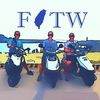
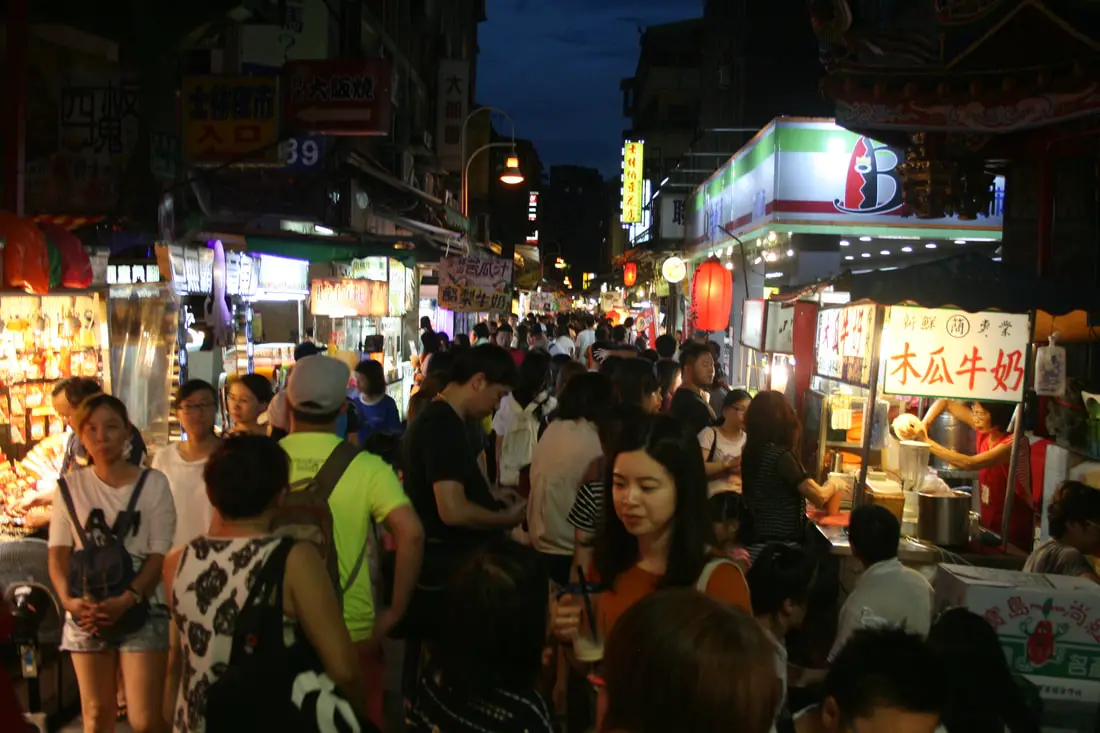
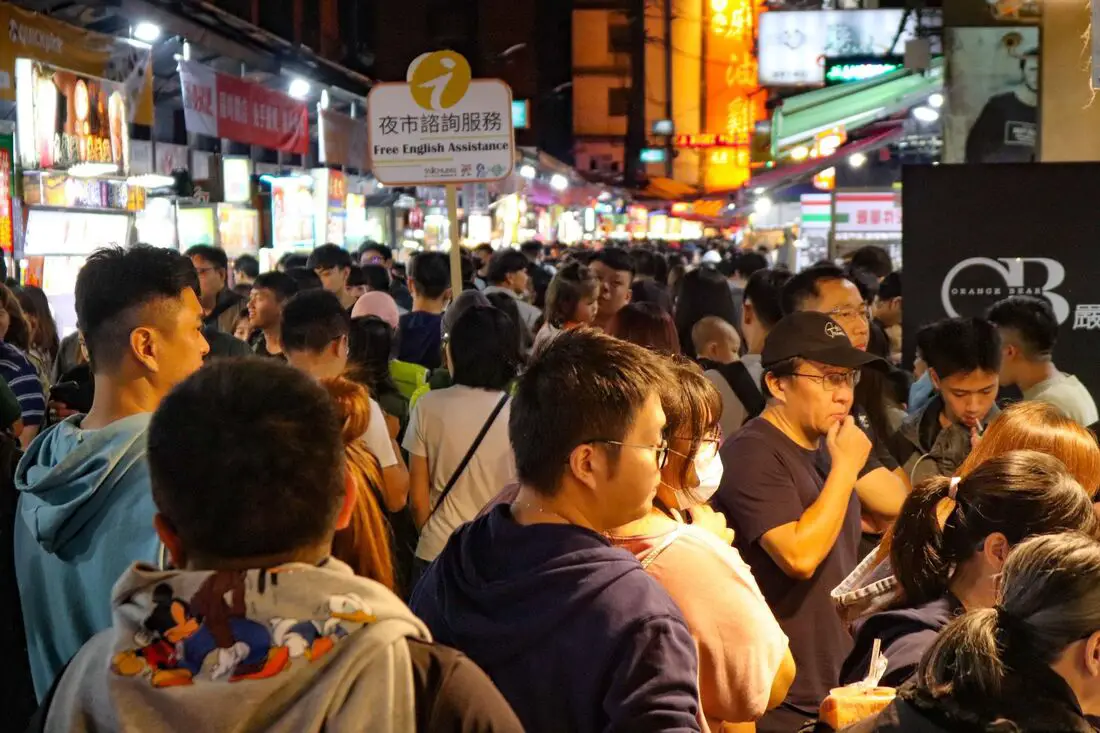
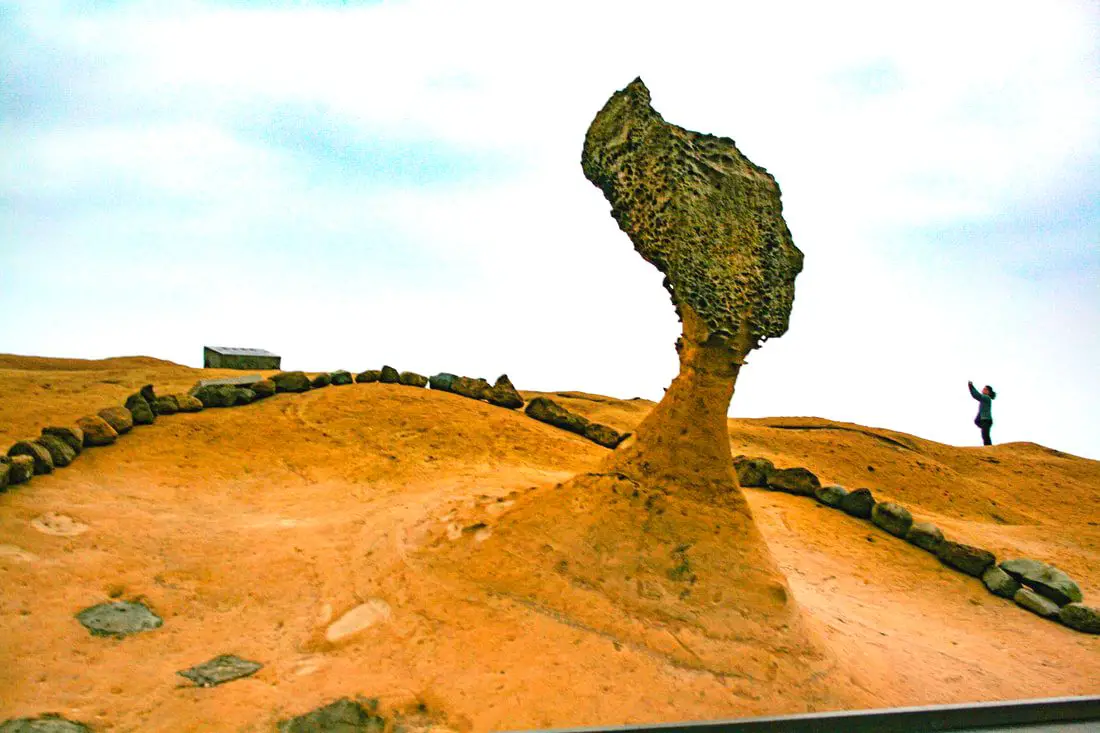
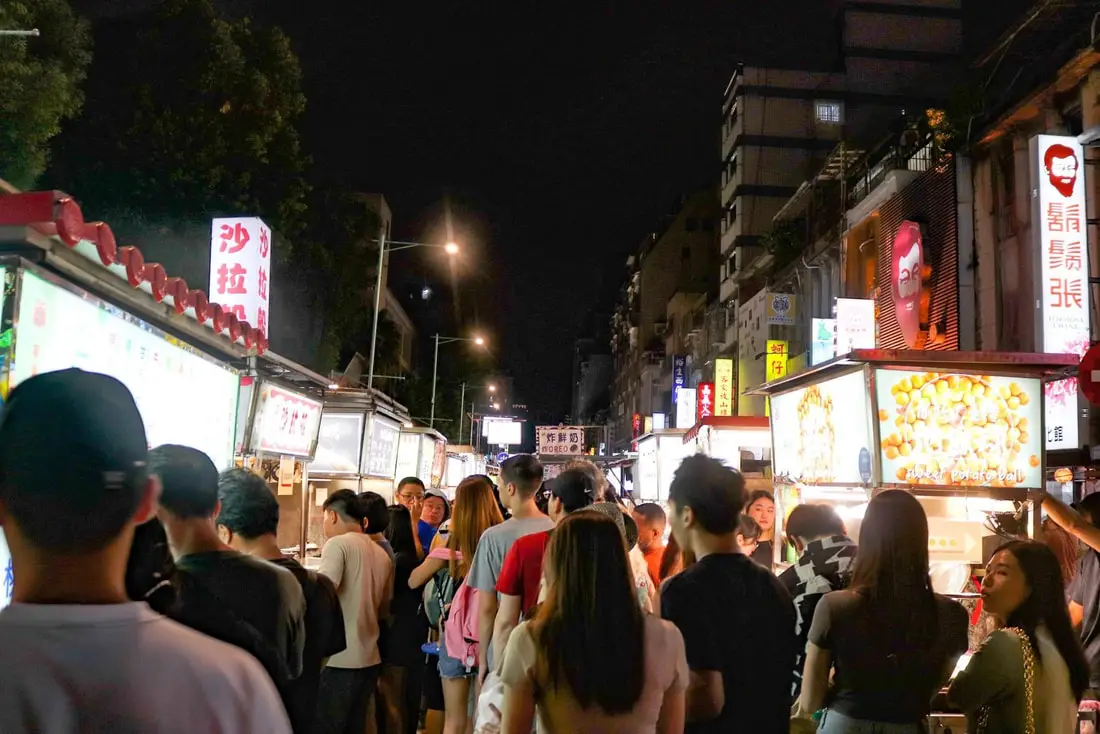
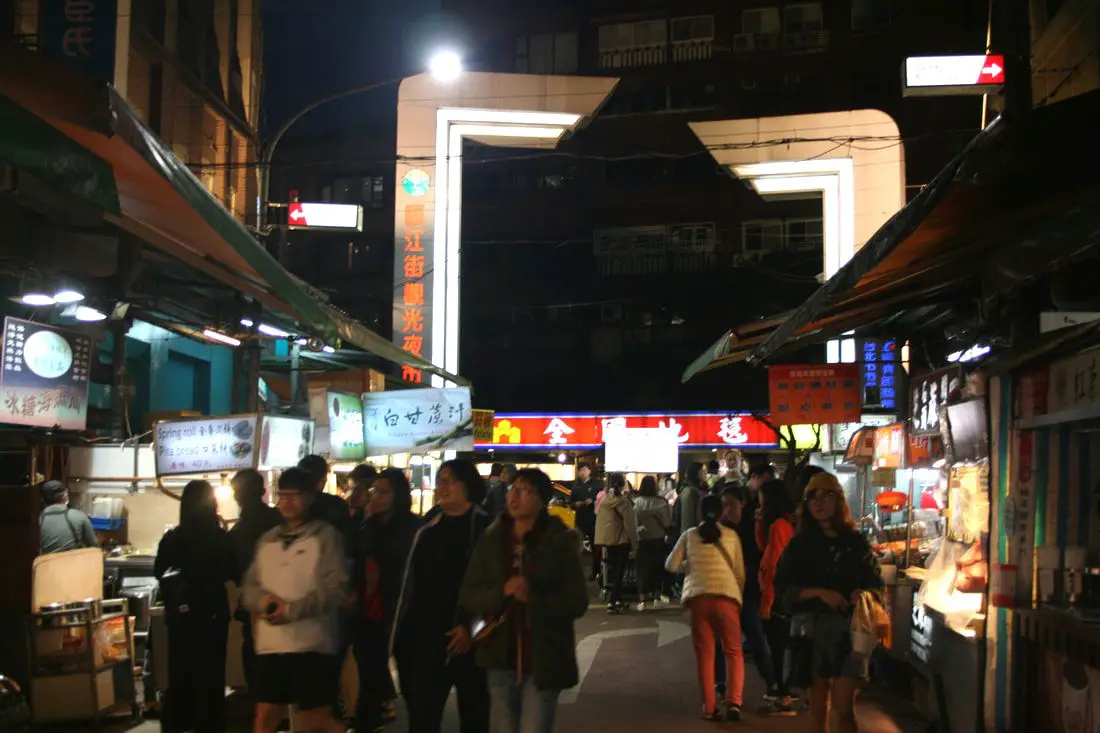
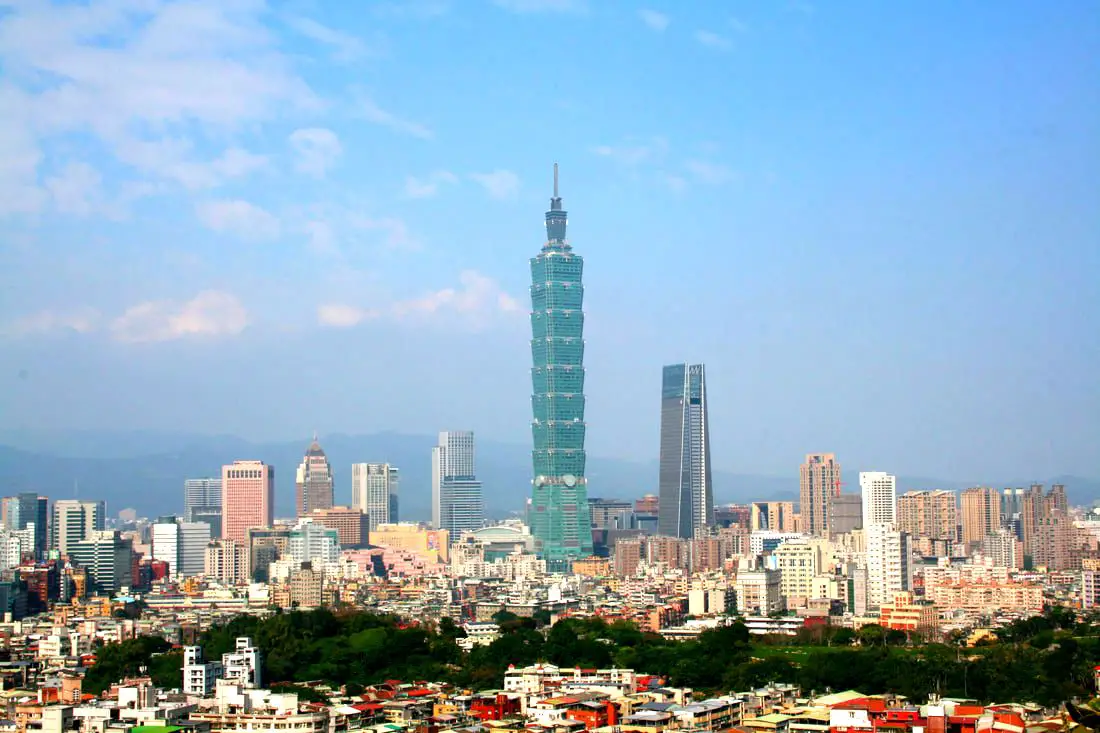
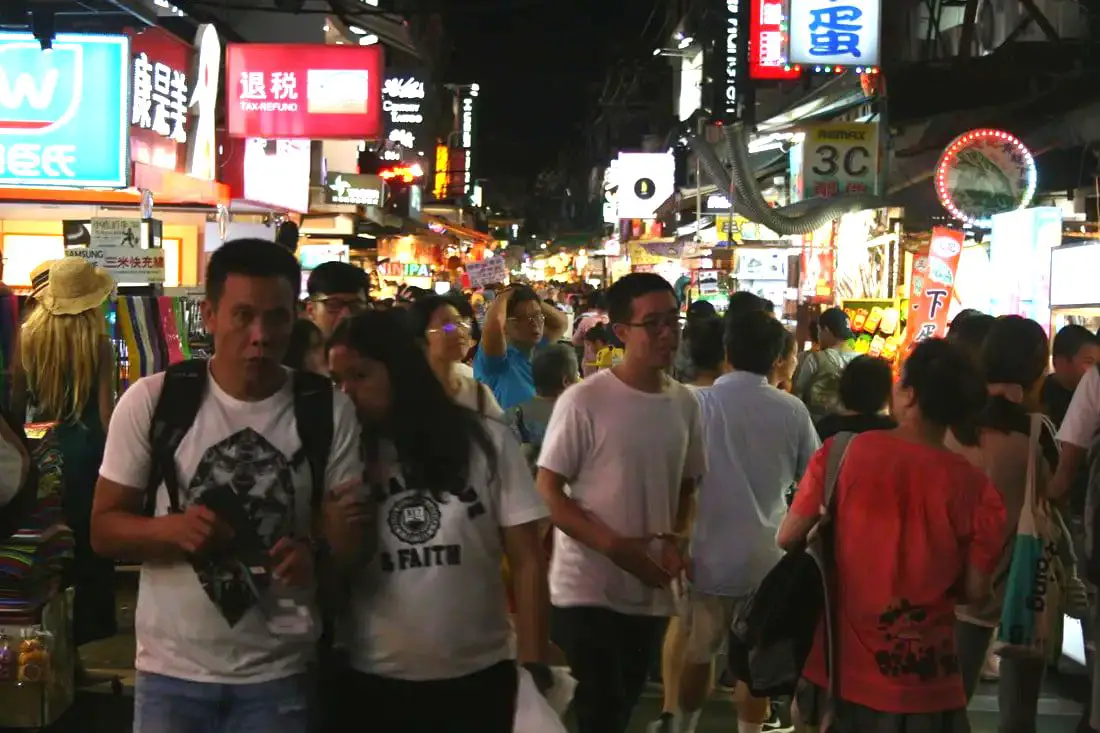
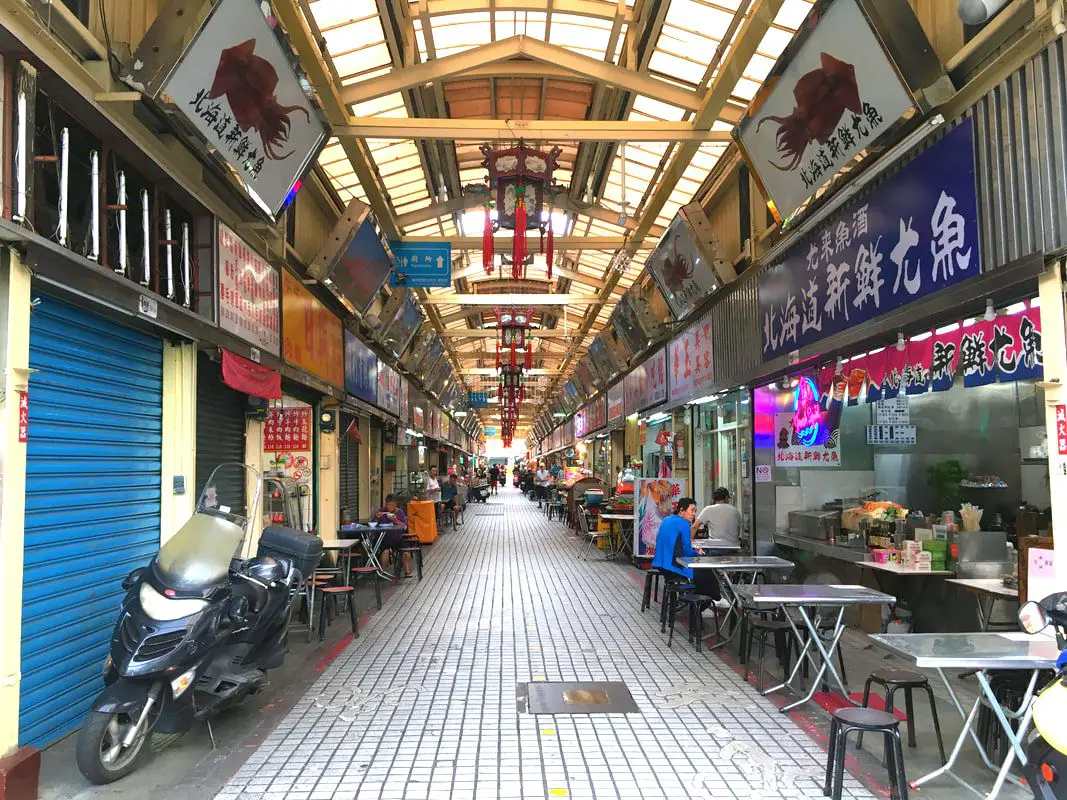
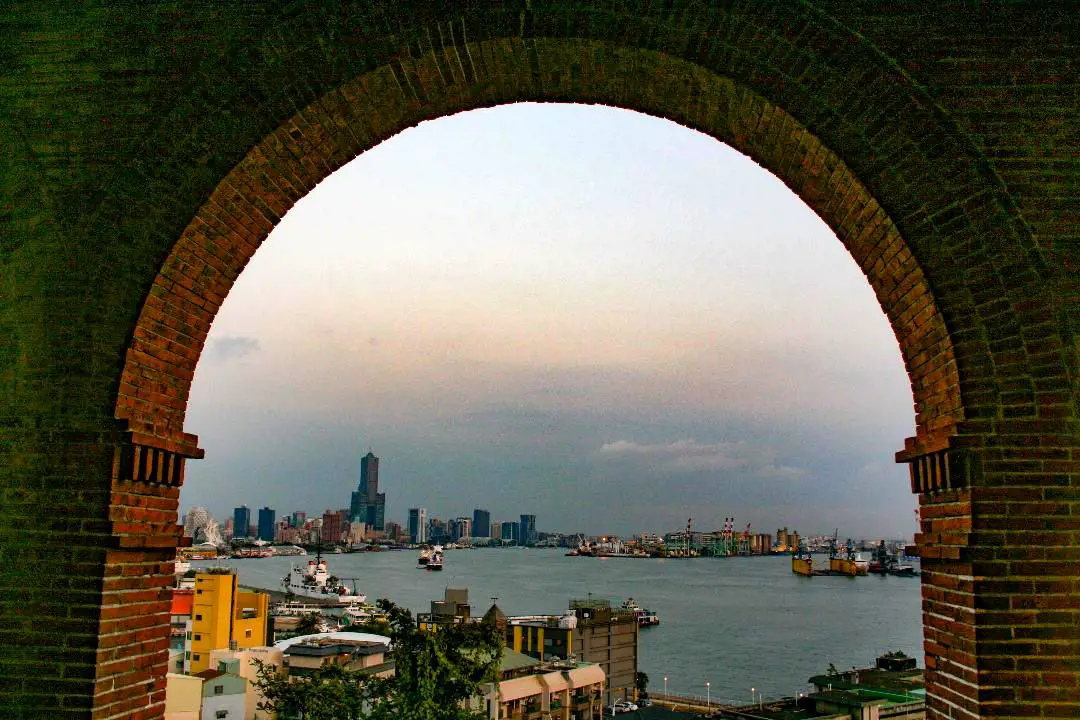
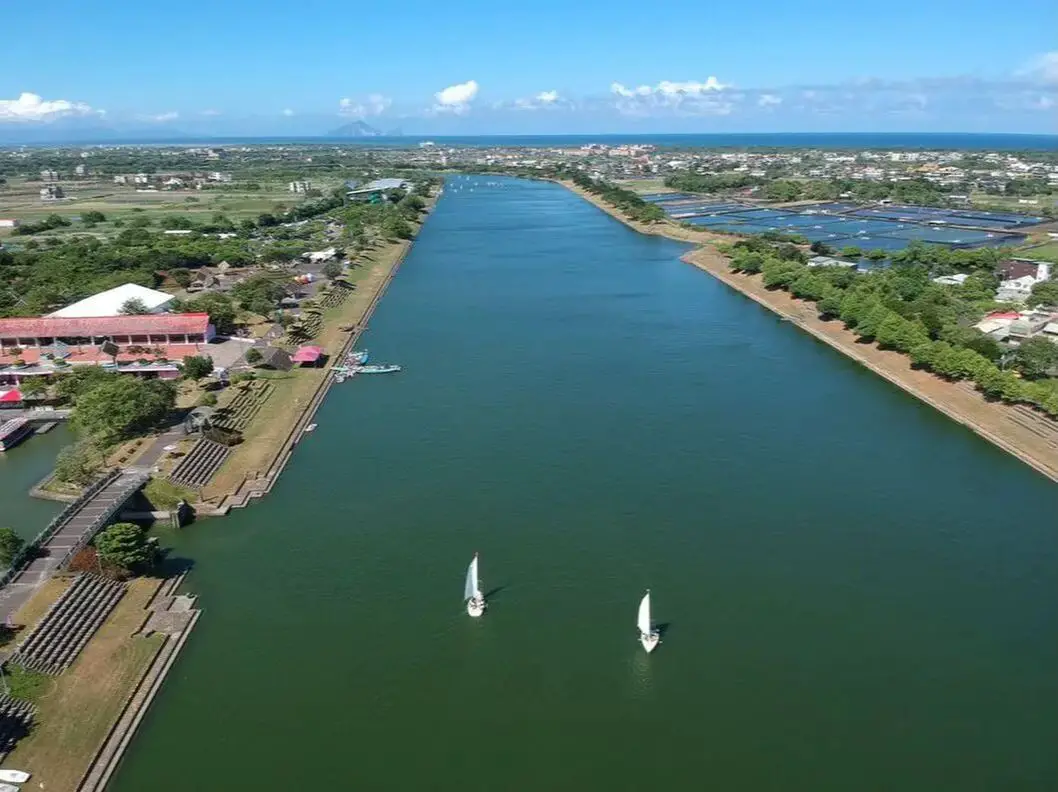
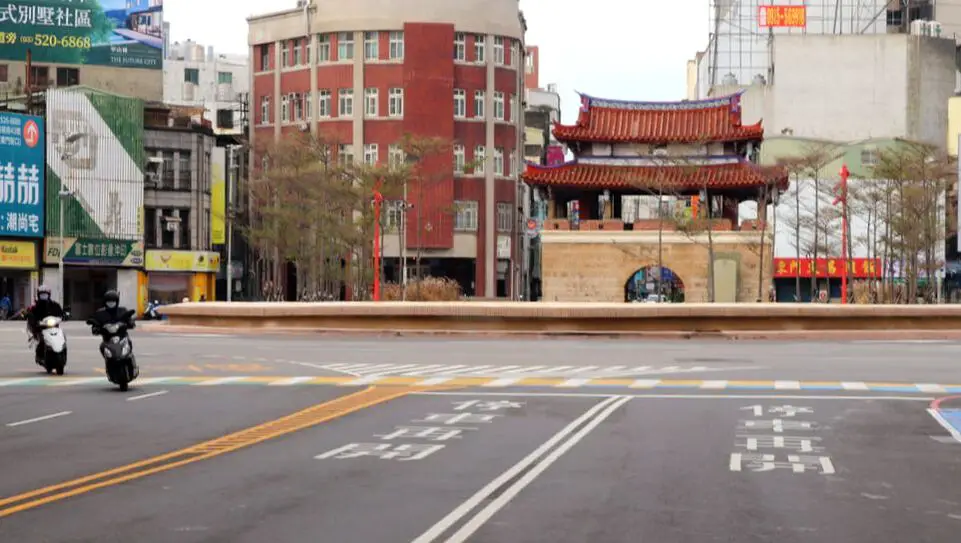
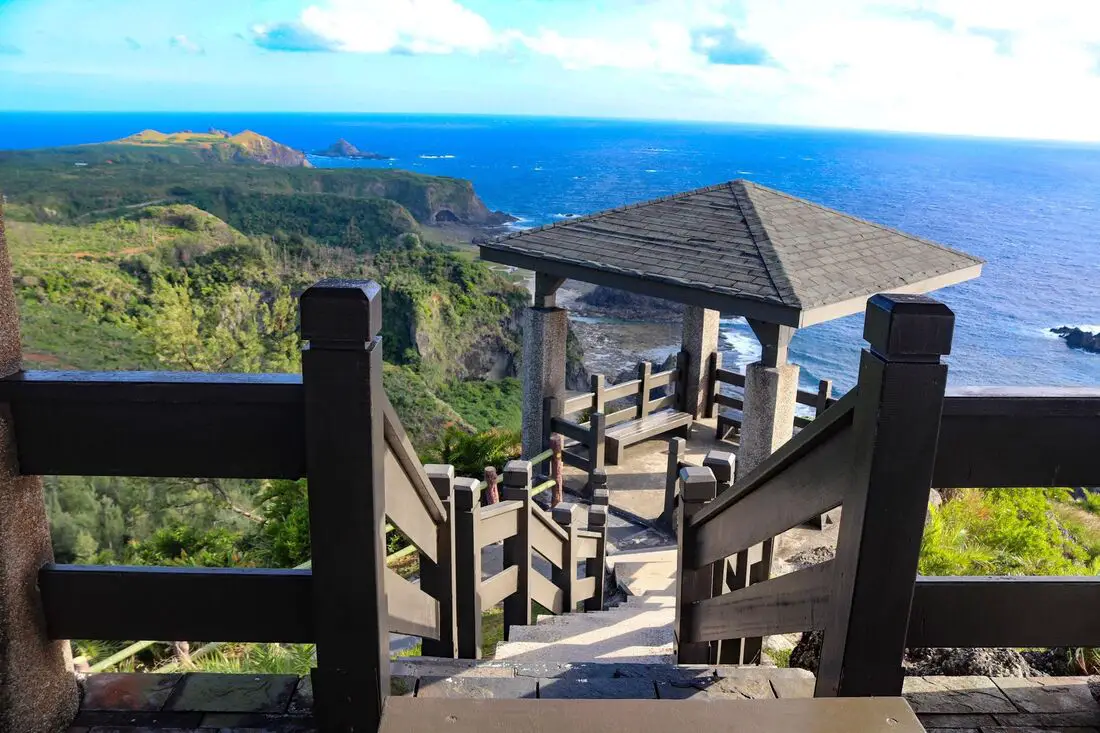
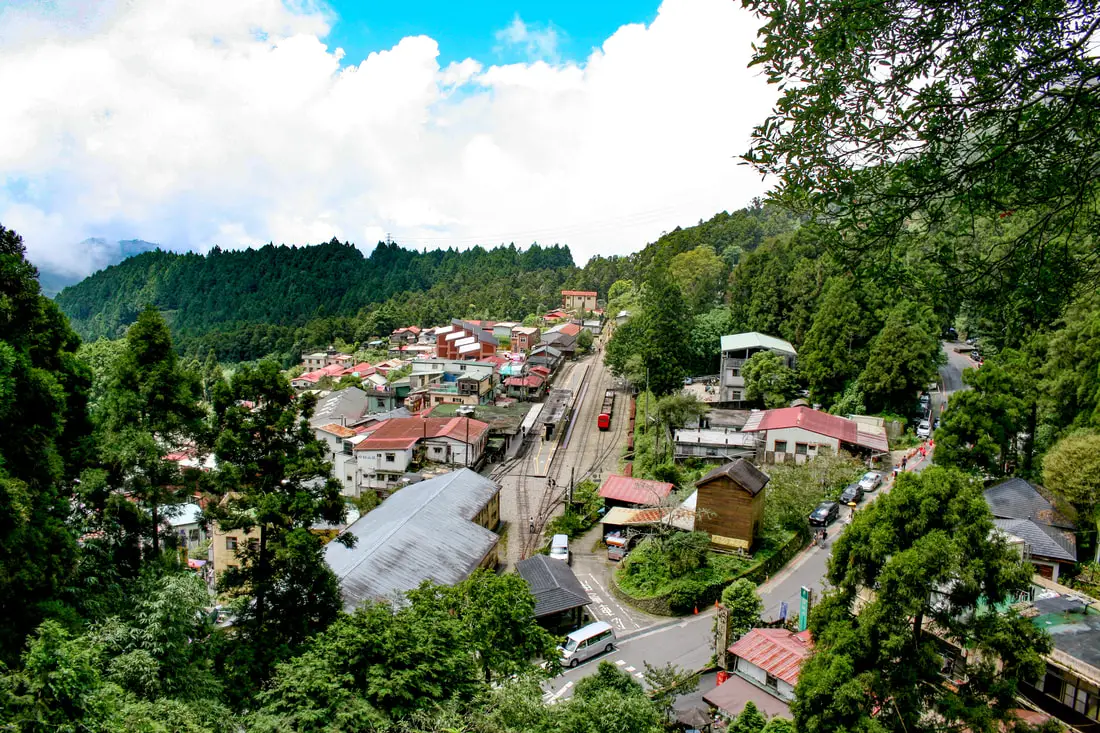


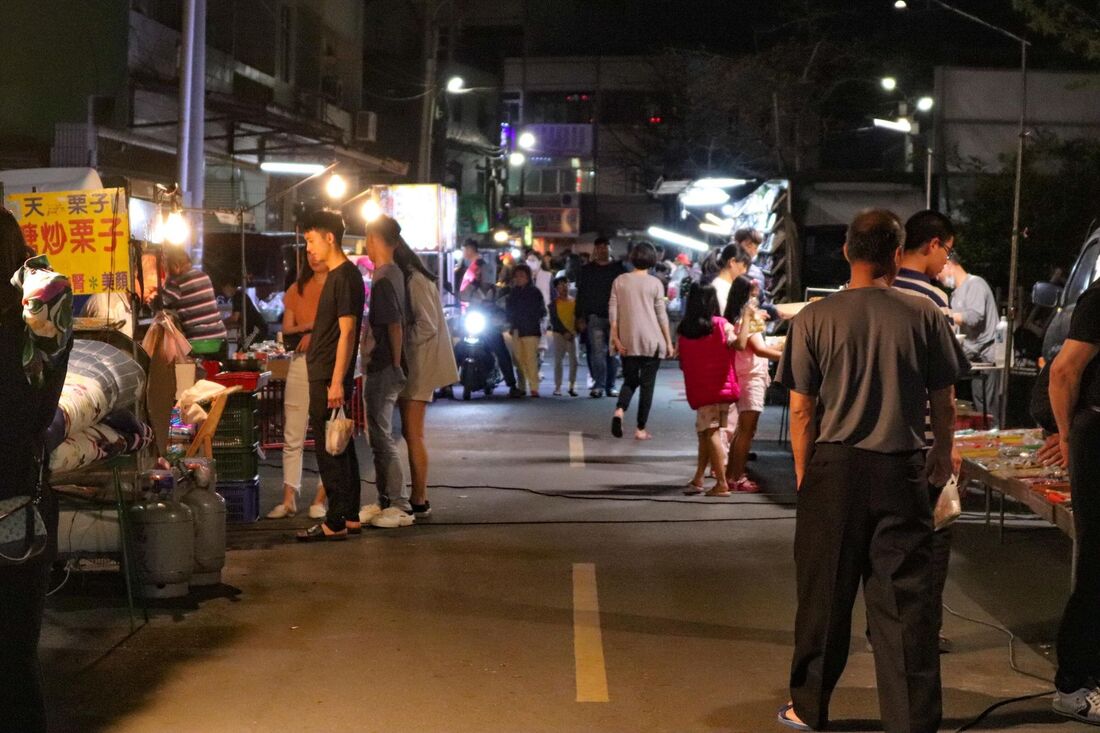
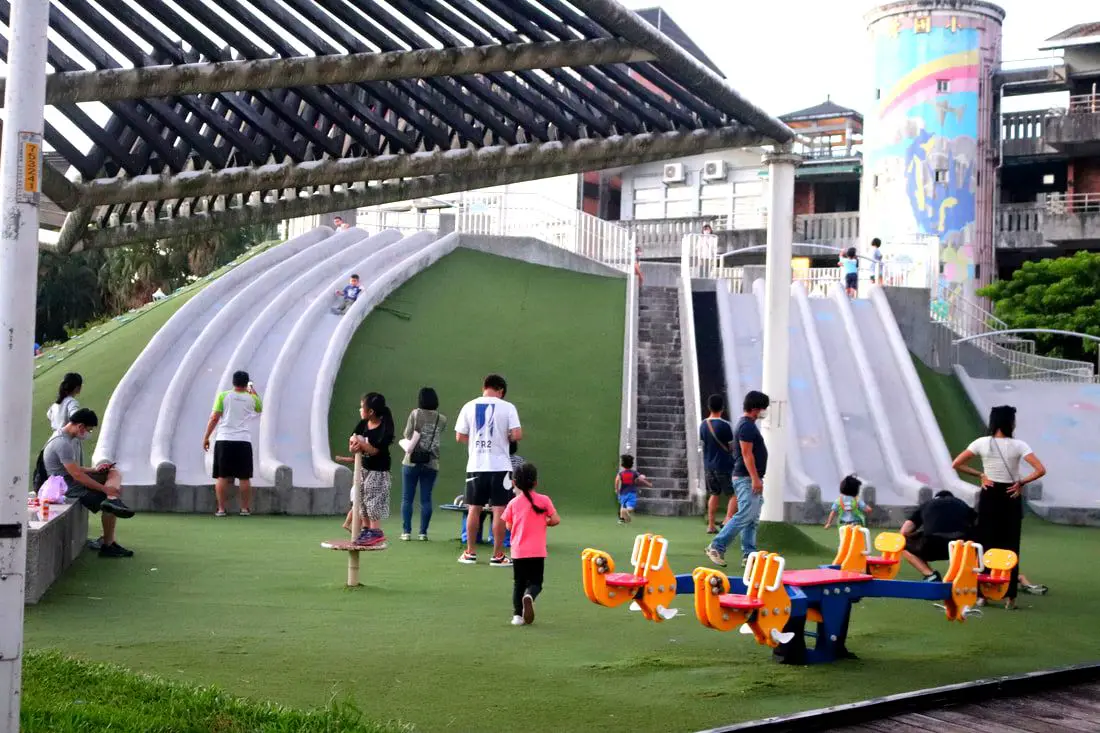
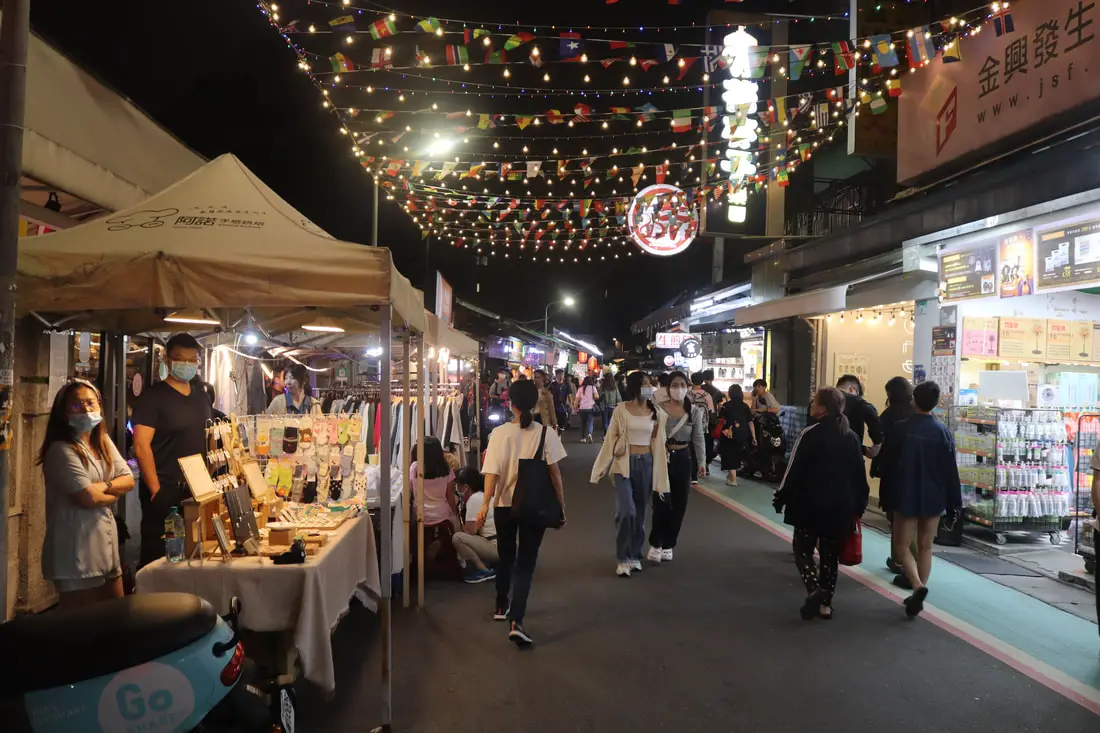
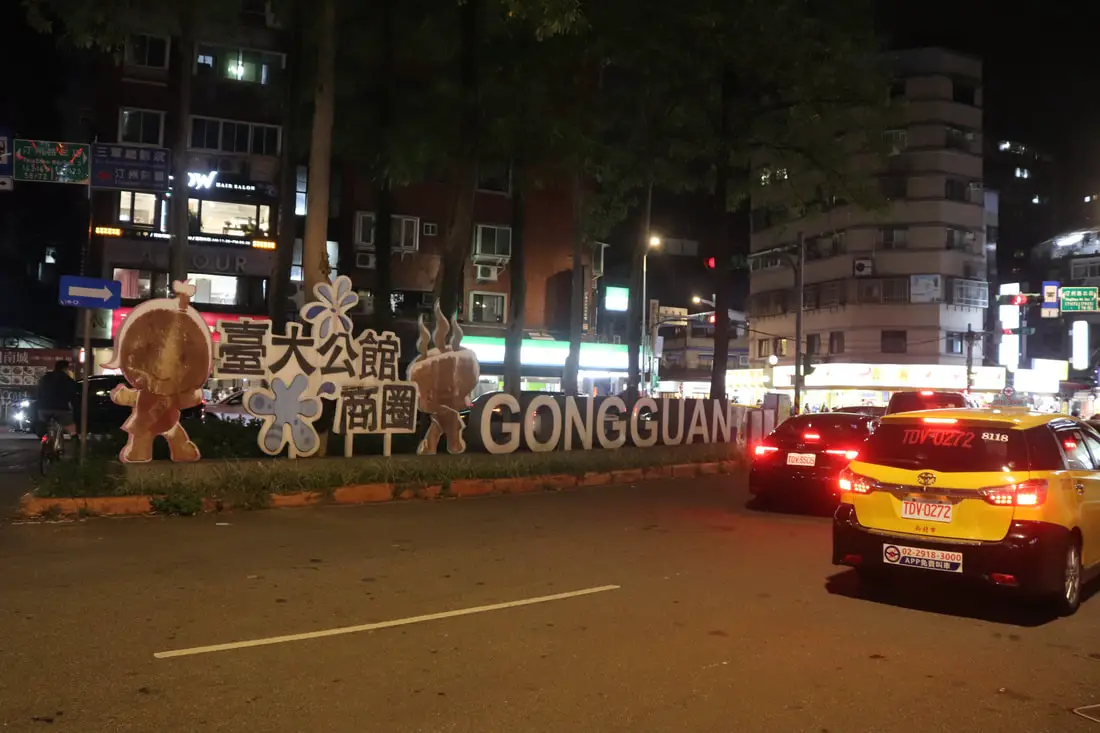
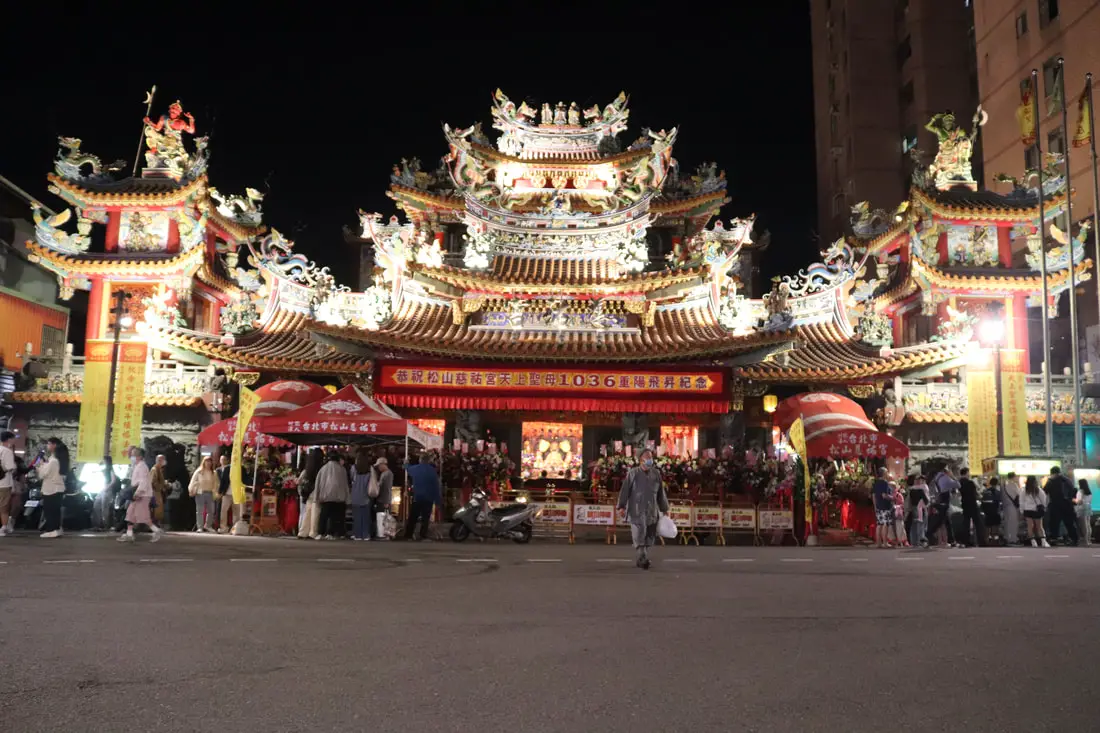
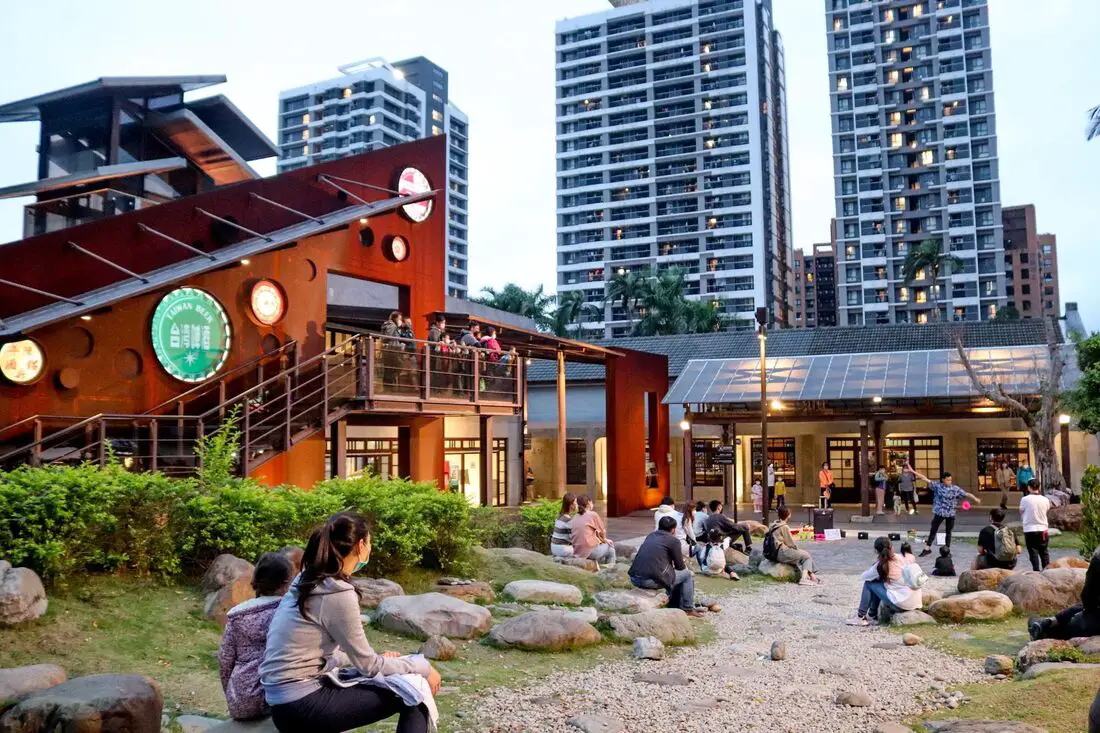
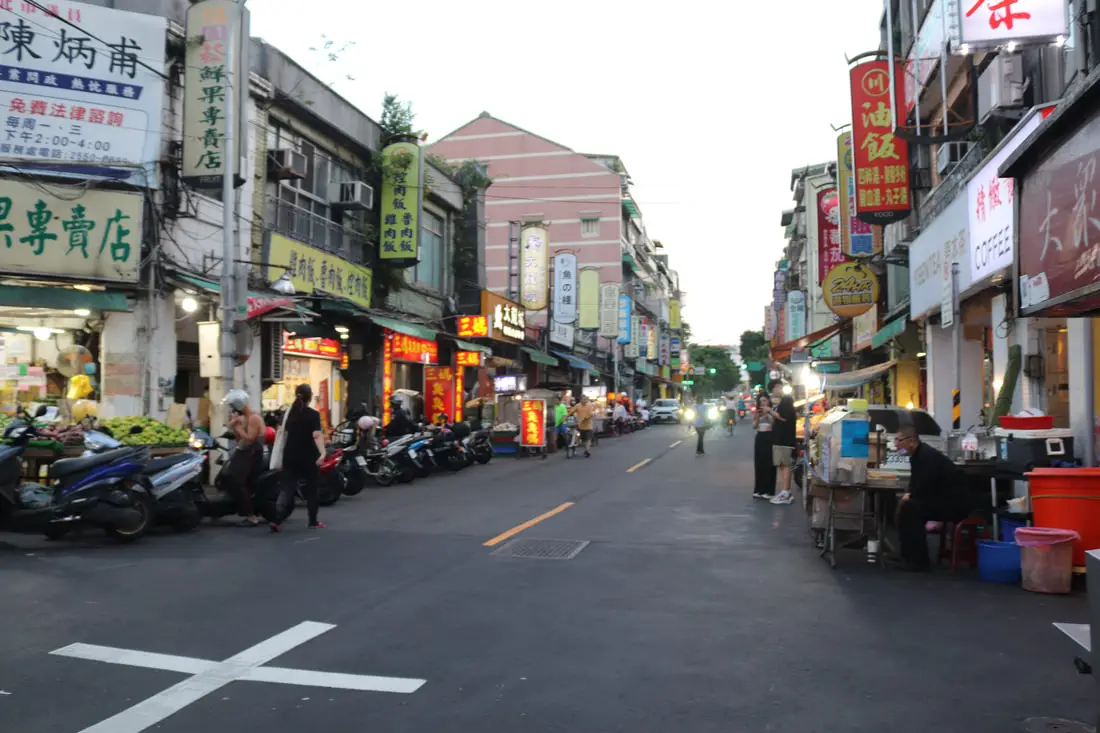
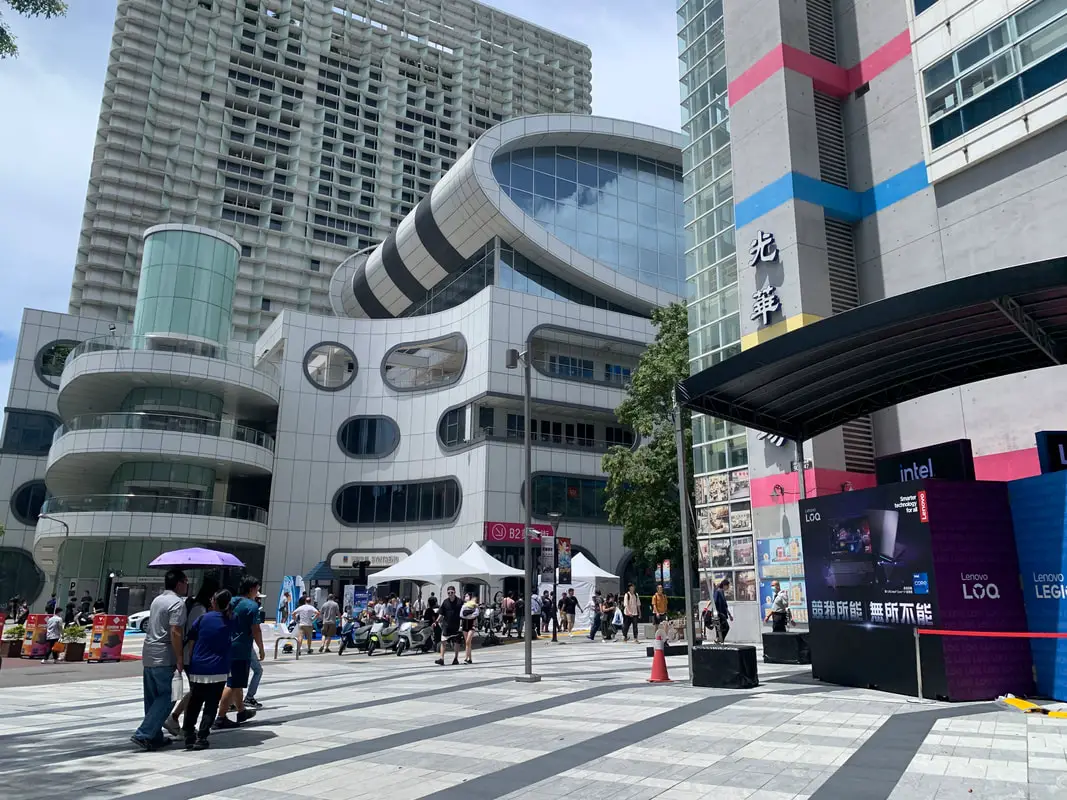
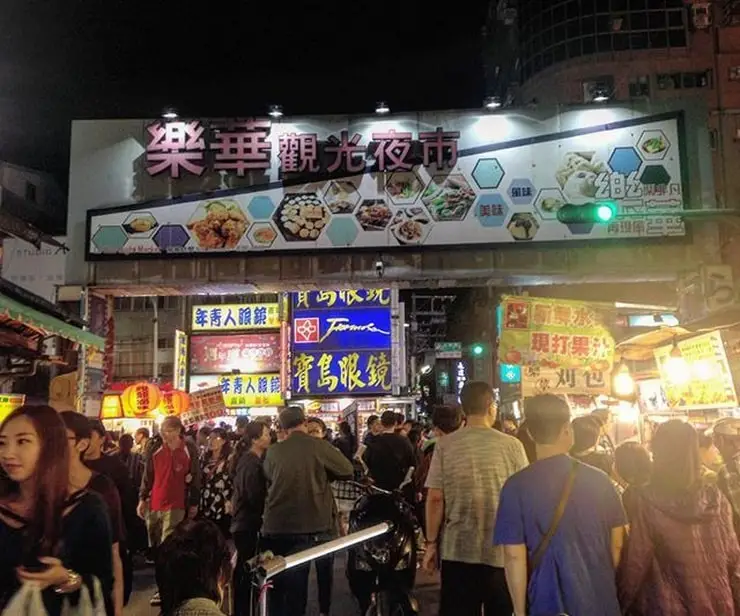
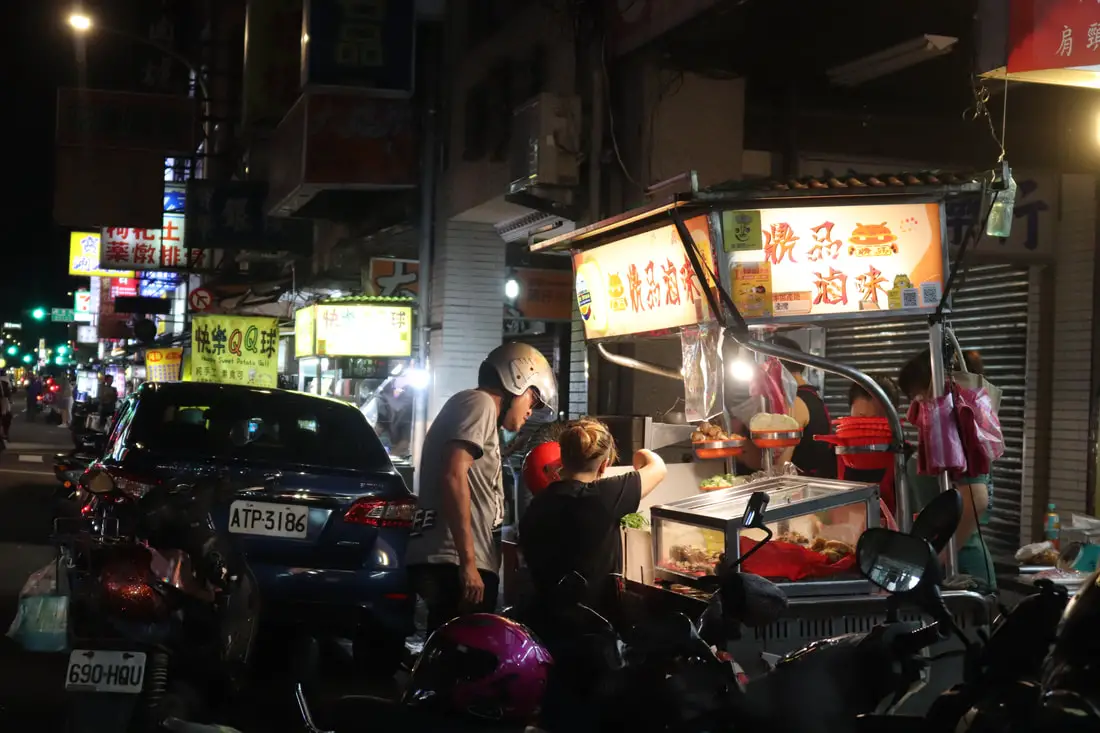
 RSS Feed
RSS Feed
